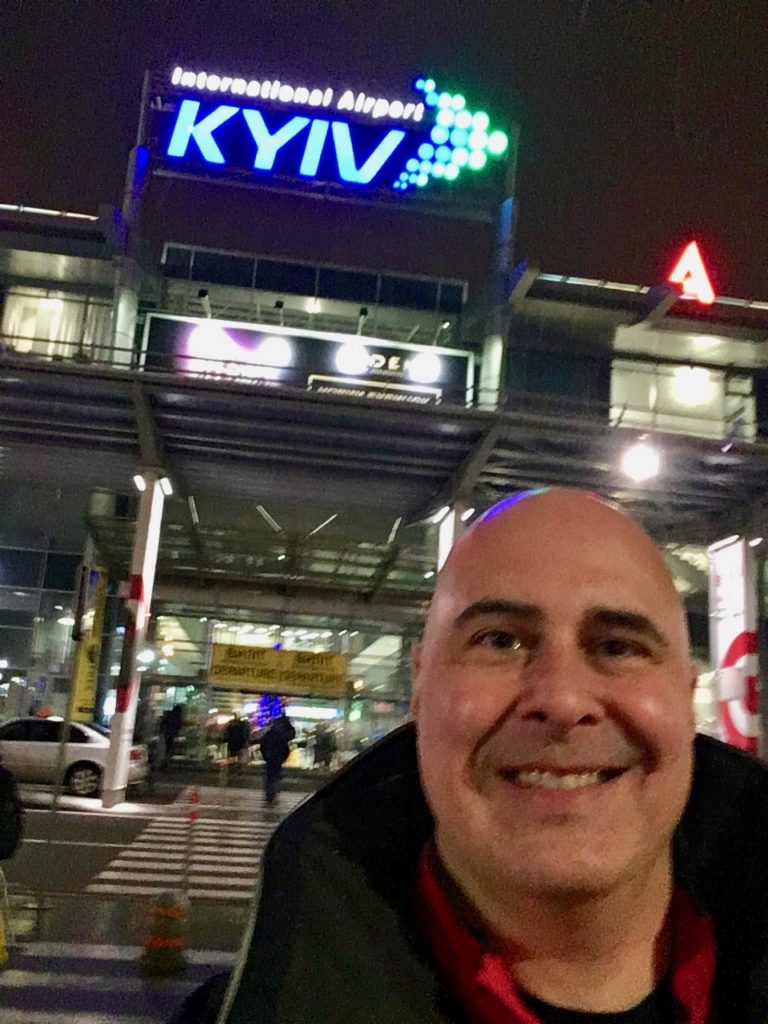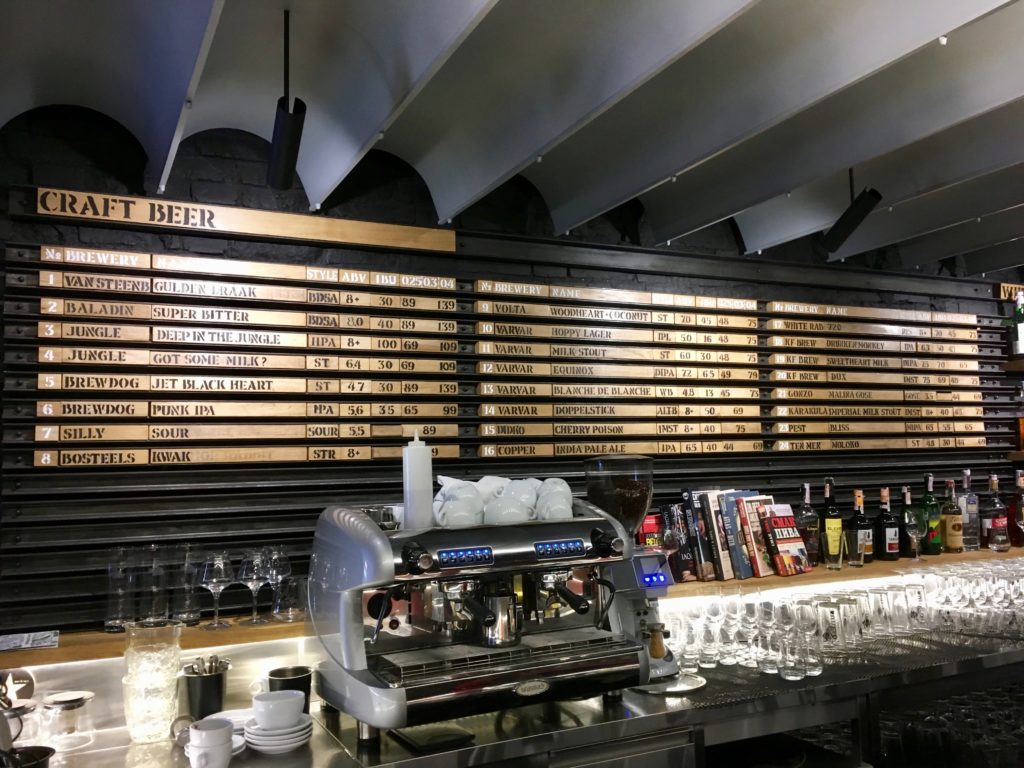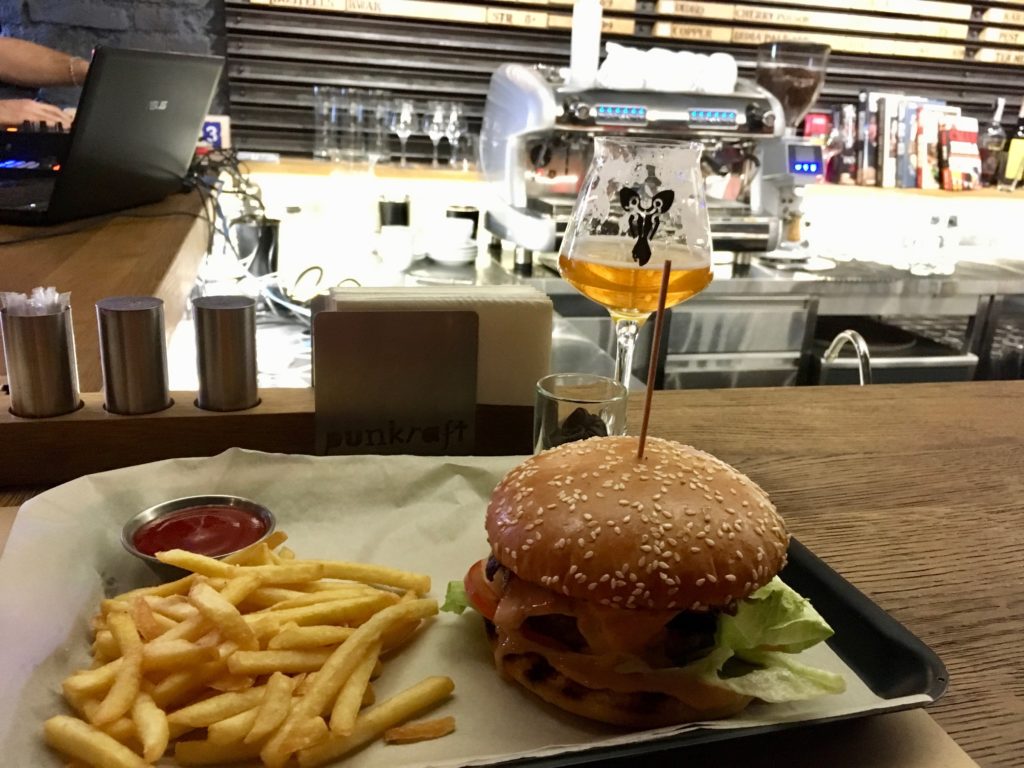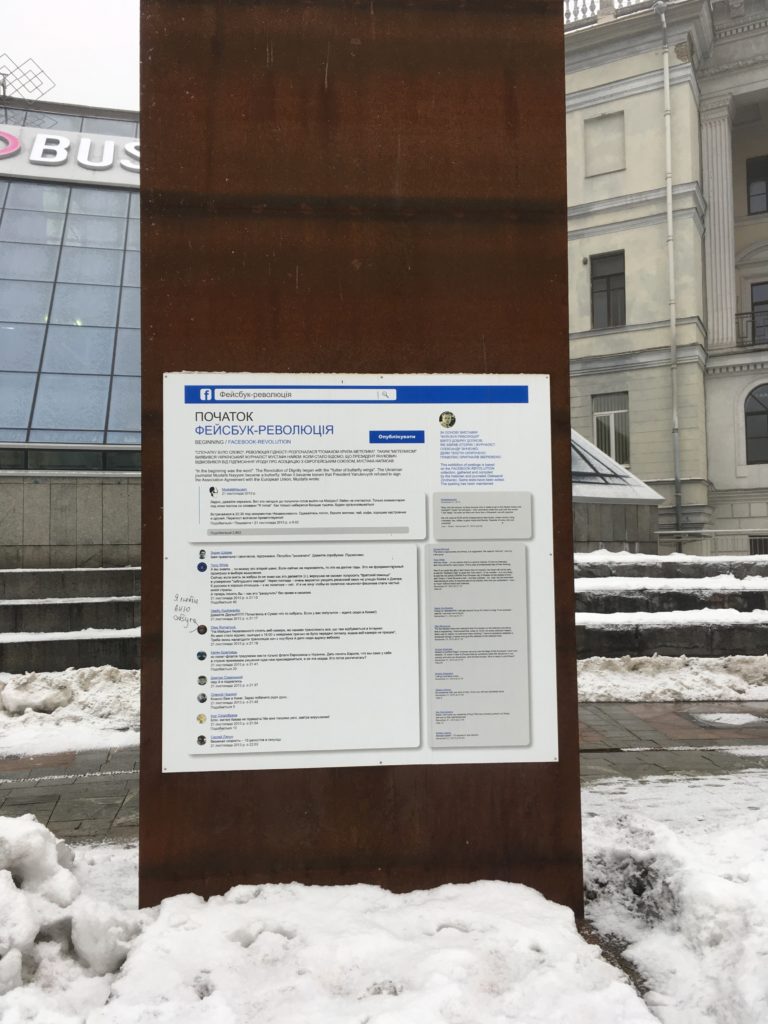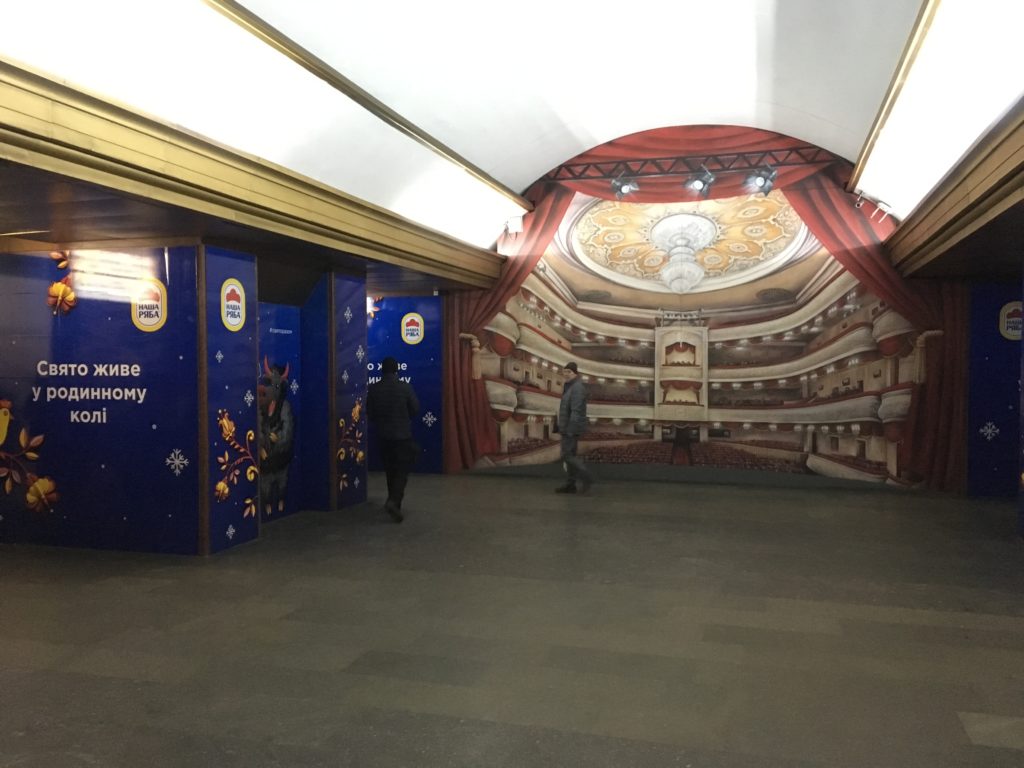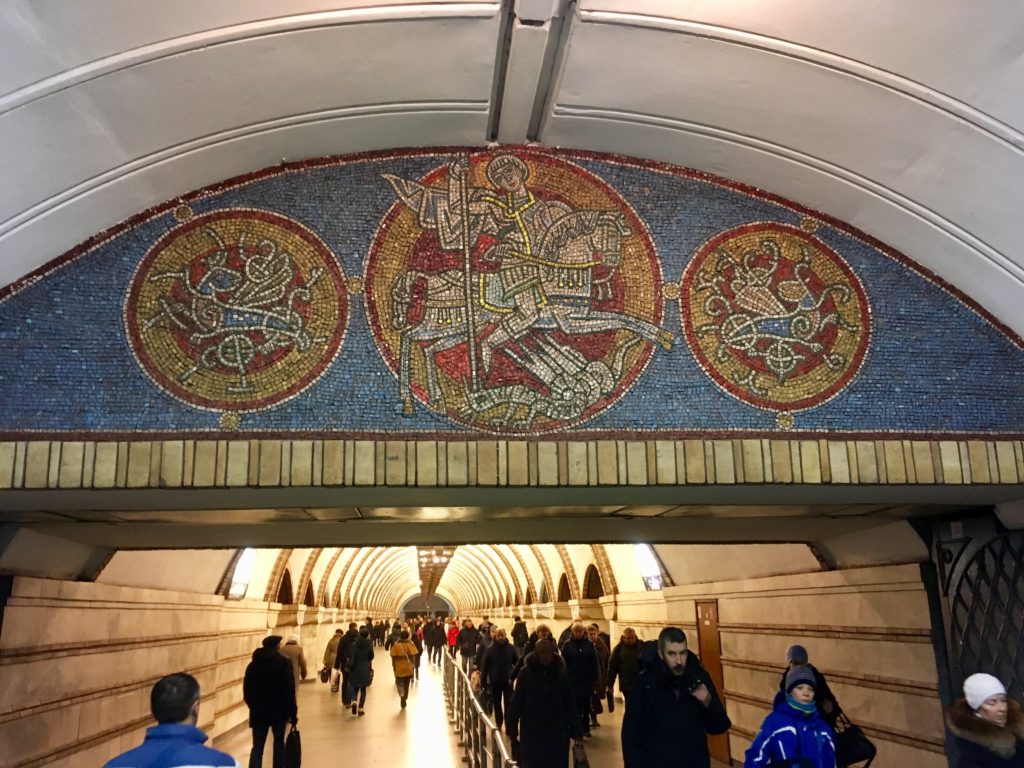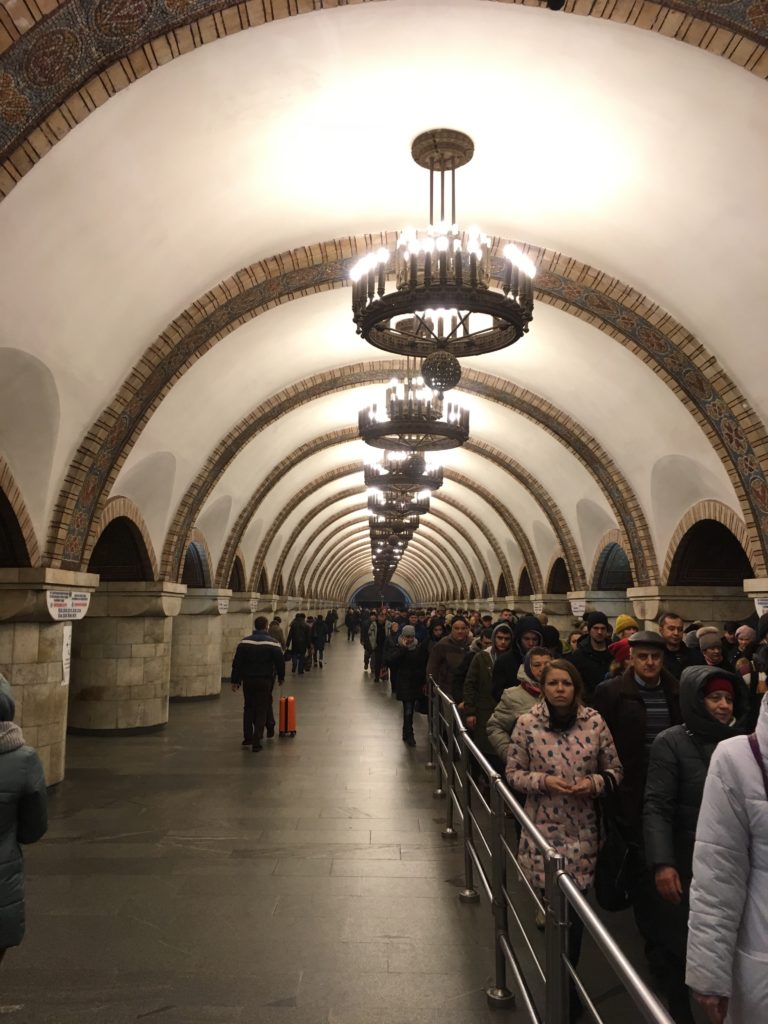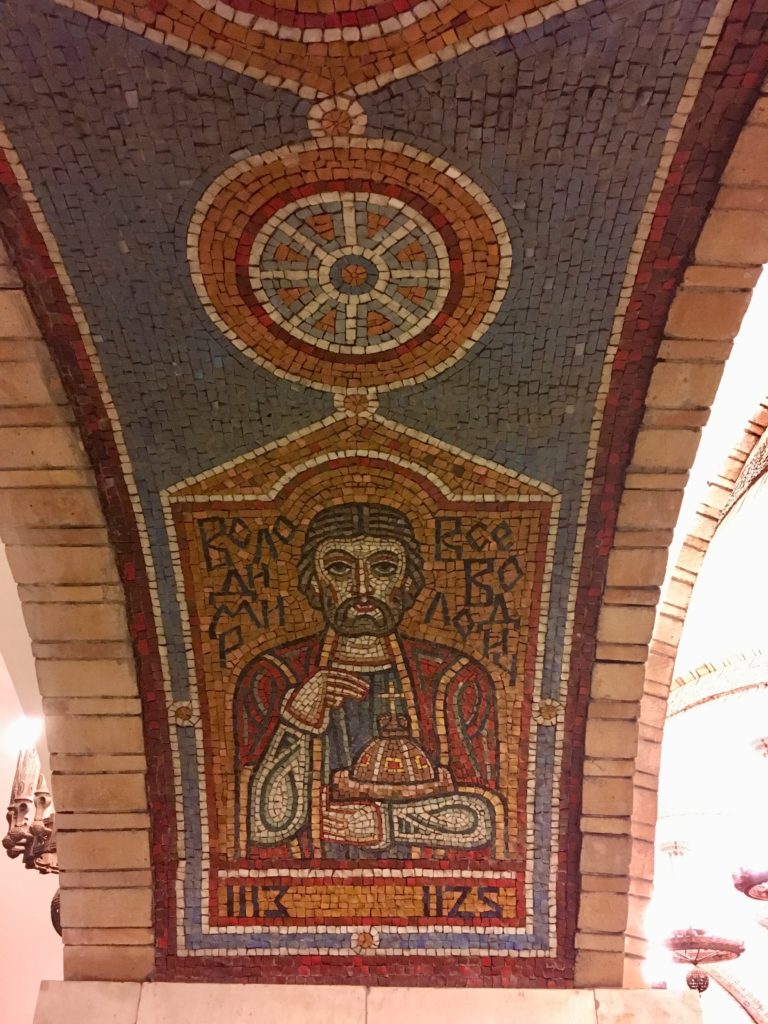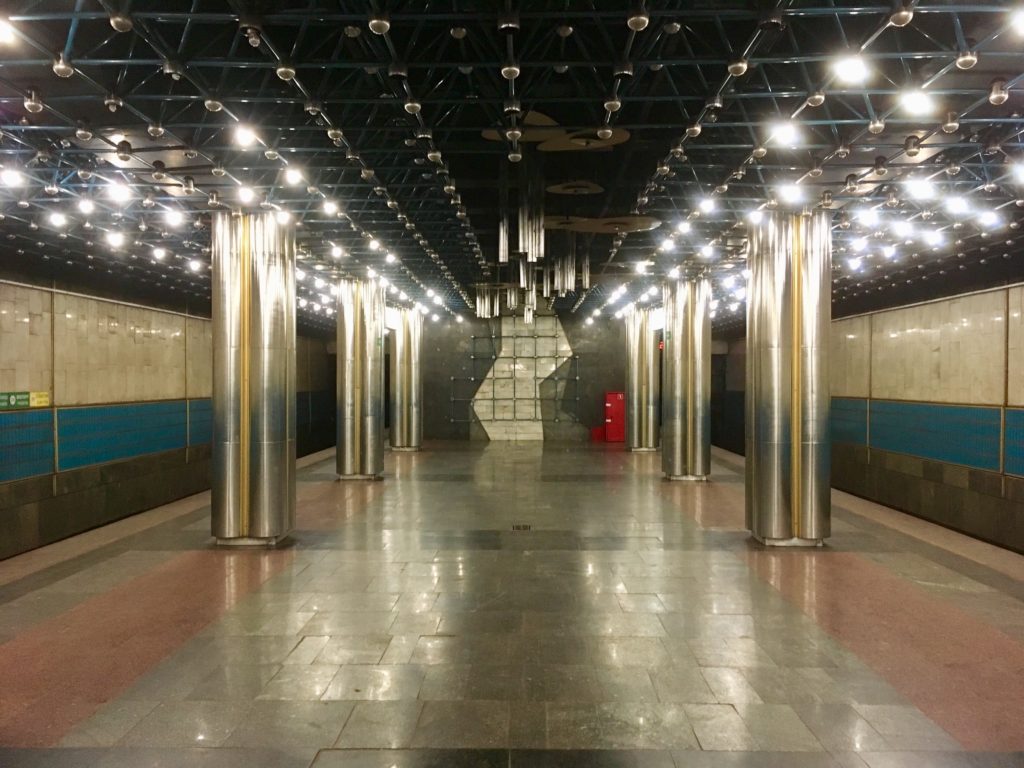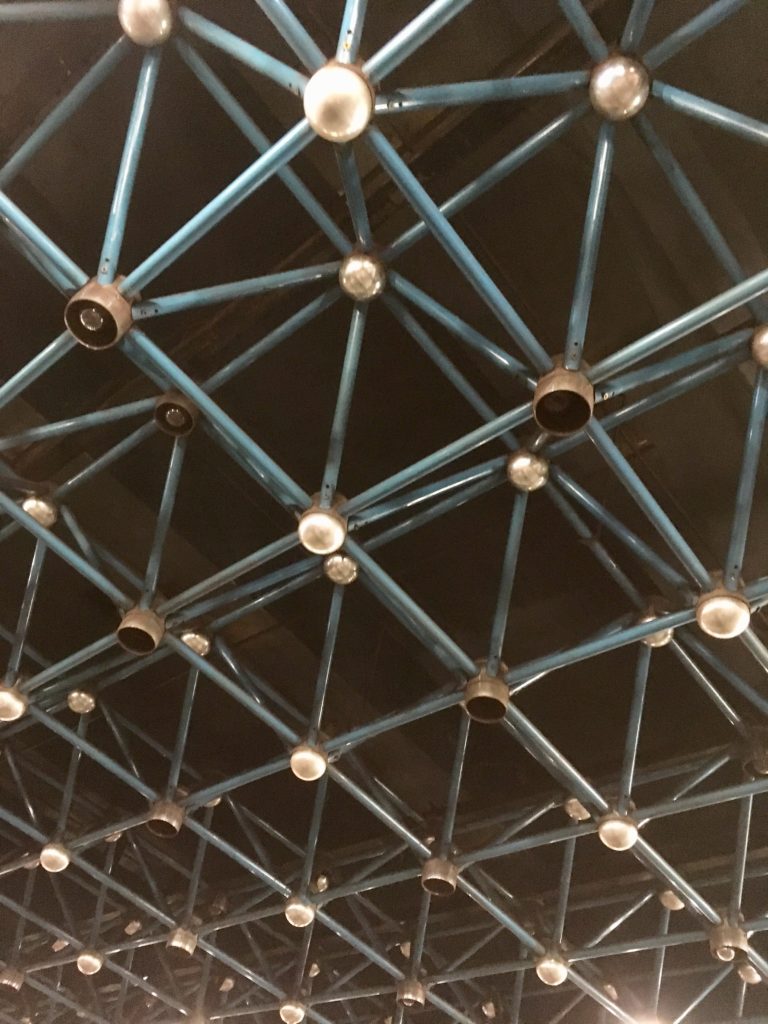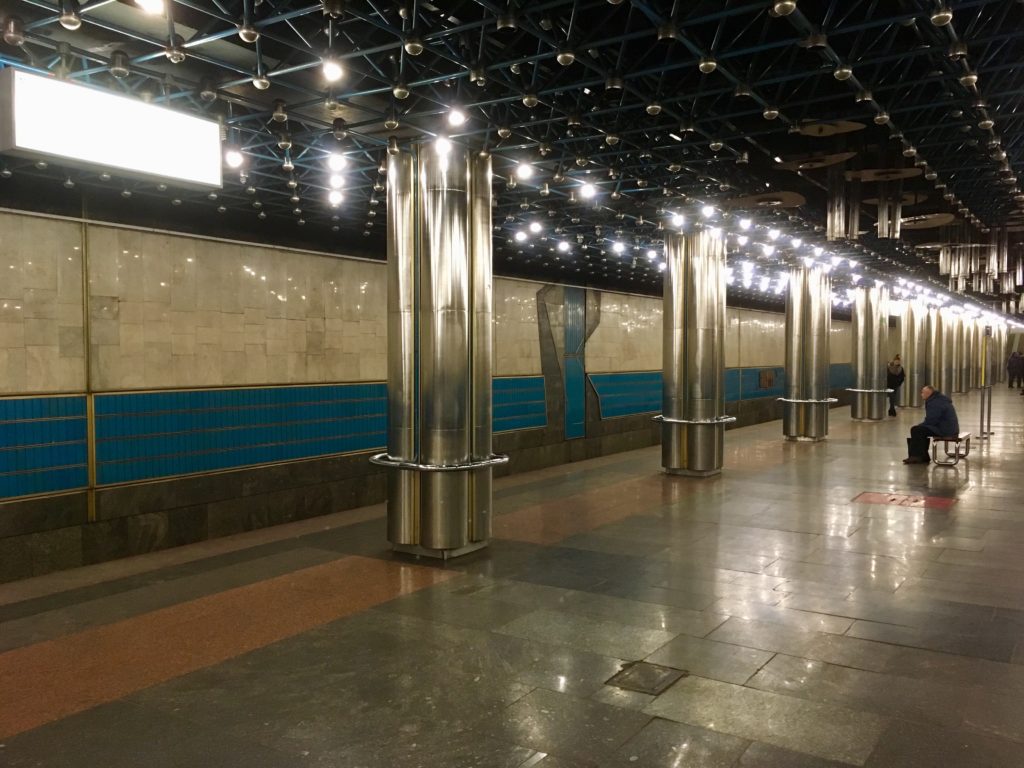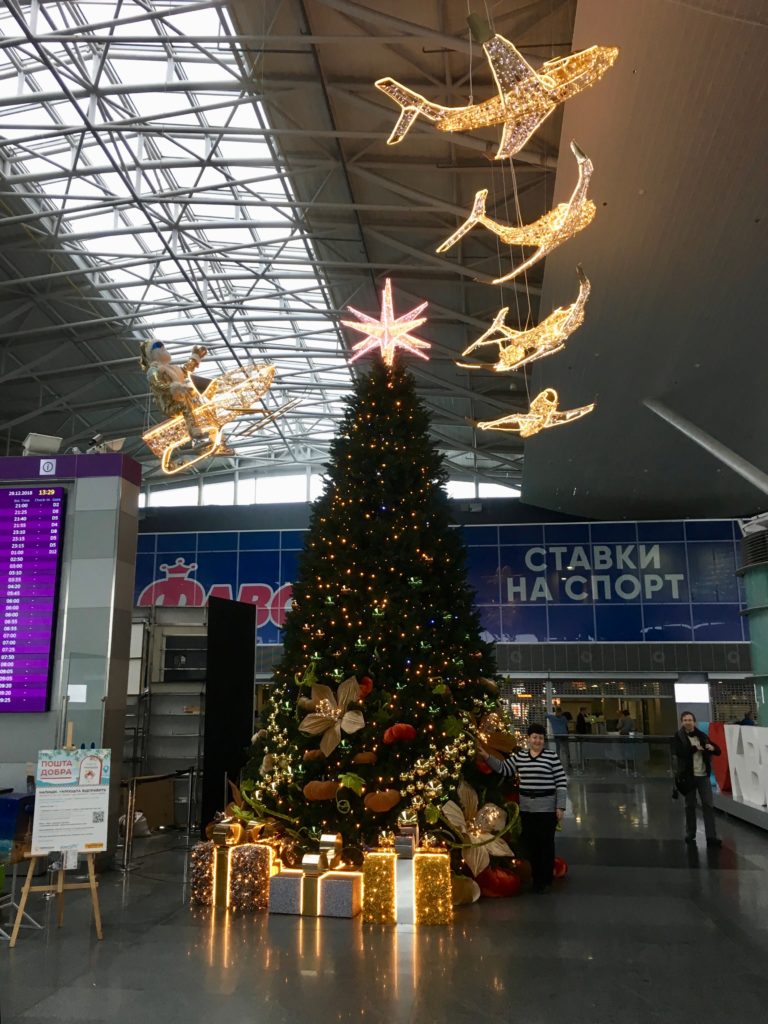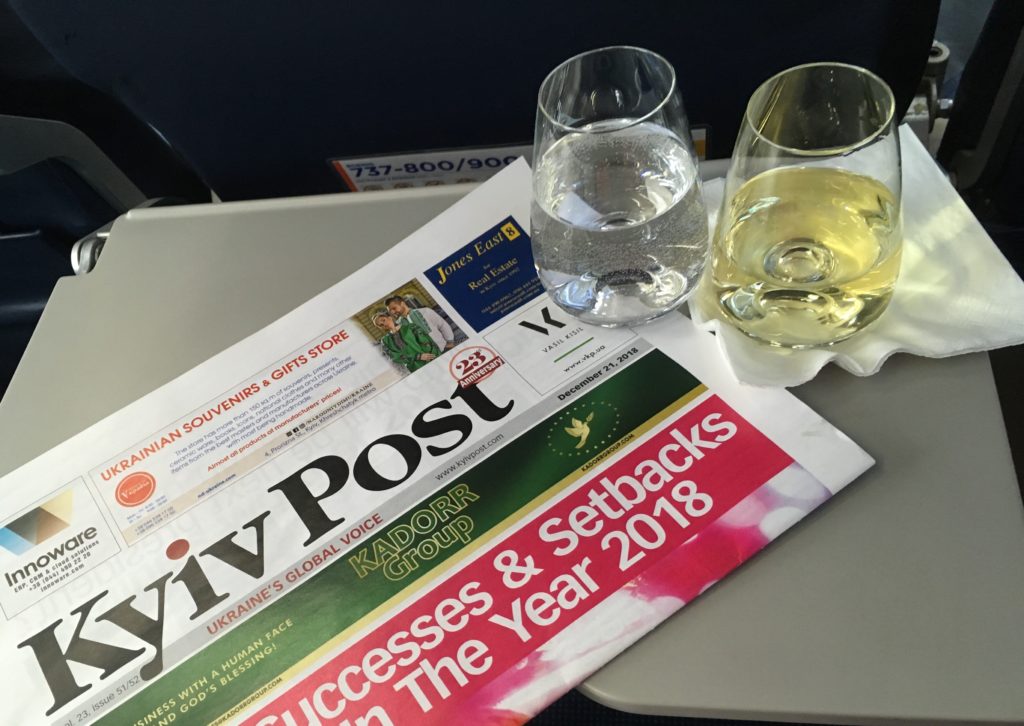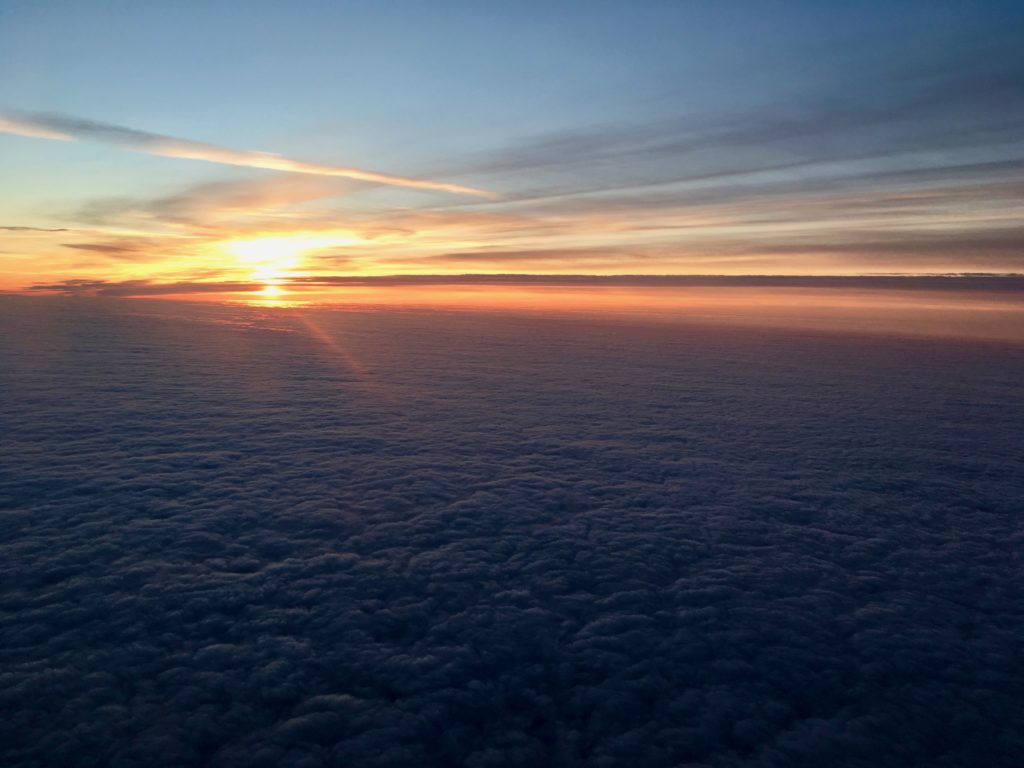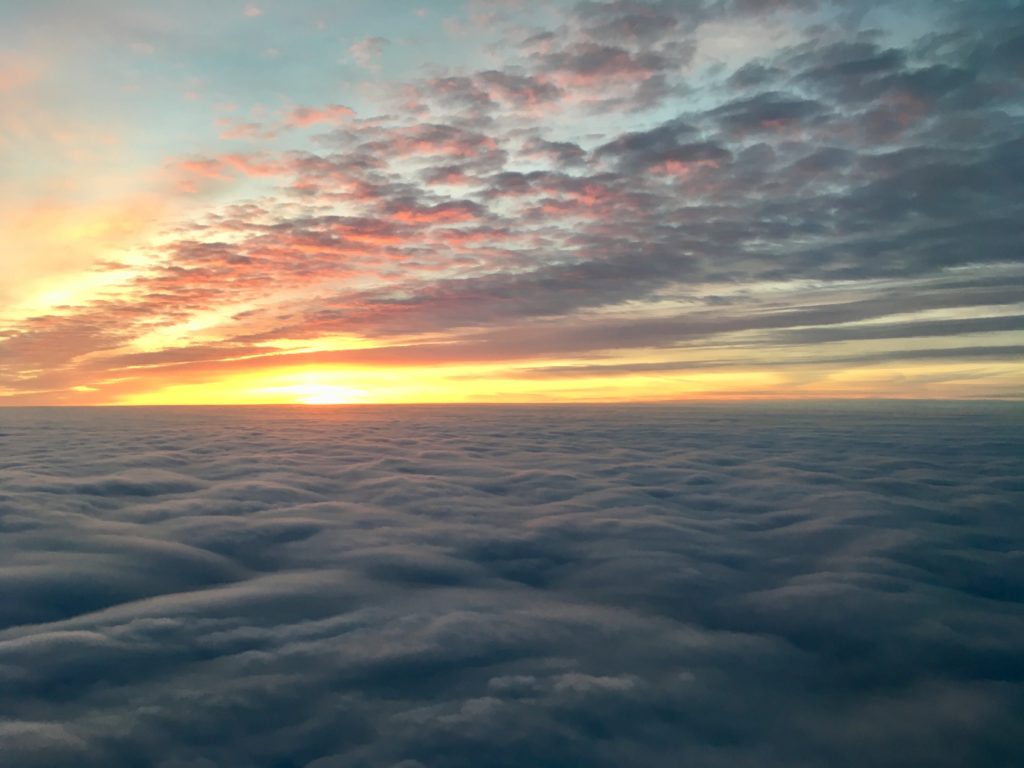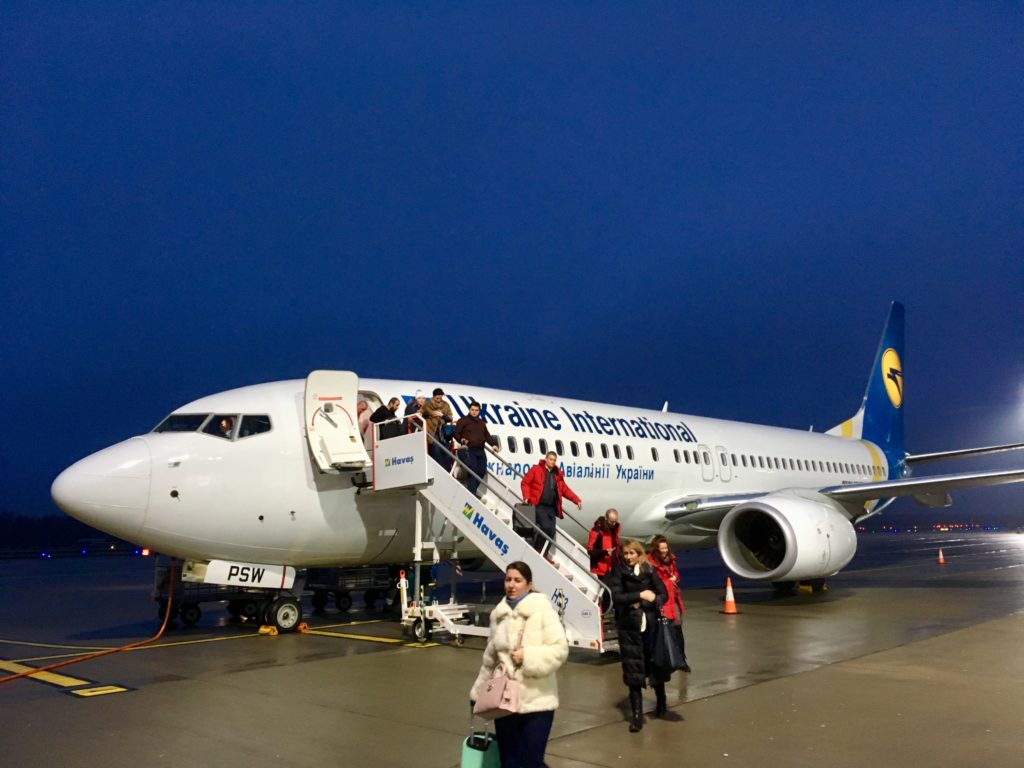I think this is the third time I’ve planned to go to Ukraine, Kiev, and Chernobyl in the last five years, and unfortunately the third time that it just didn’t look like it would work out. Battling a nasty sinus infection for the last six weeks that refused to go away, beaten down by nearly 30,000 miles of work travel in the same period, combined with getting food poisoning on Christmas Eve…it once again looked like it wouldn’t happen.
However, the day of the trip rolled around, I decided I could survive the flights, and since I really wanted to see Chernobyl in the winter I decided I had to try. After all, Ukraine is the one country out of all the countries I feel worst about “counting” when I say I’ve been to every country. See, I was in the Ukrainian SSR of the Soviet Union in 1989, but I’ve never been to independent Ukraine. Add that to the fact that the Chernobyl scare was a significant global event during my teen years…I felt I had to try.
If you don’t know what the Chernobyl Disaster is, I recommend you head over to Wikipedia to read up. Basically, in 1986 during a very poorly designed emergency test the reactor ran out of control causing a fire and steam explosion that propelled a bunch of highly radioactive material into the atmosphere, which was then carried by the wind all over northern Europe.
I’ll skip over the flights, but I made it to Kiev around 1030p, and with the tour kicking off the next morning nice and early sleep would be scarce…but that’s not a problem. I never sleep great the first night in Europe with the time change anyways. Right. I’ll review the flights later, but onto the stuff you’re probably really interested in. What’s Chernobyl like in the winter?
Well, for starters, I was worried about snow. Watching online, temperatures had hovered around 0C for the previous two weeks leading up to my trip, although there were dips above and below, and times that seemed to indicate significant snow was falling. The minute I walked out of the airport, it was actually 2C…and a good amount of snow coming down. I was hopeful!
I booked my tour with SoloEast Tours based on the recommendations with several friends, and their instruction to meet at a square in central Kiev seemed easy enough. I don’t know if it was because of snow in the morning or what, but I had four straight Uber drivers drive towards me for five minutes or so…then abruptly cancel. After a successful Uber from the airport the previous night I was puzzled, and a bit confused. Fortunately, I finally got one and made it to the point at exactly the departure time. Fortunately, turns out, they always wait 10-15 minutes just in case, so wasn’t a problem.
There were maybe 15 people in my van, which was a good size for a tour. Mostly younger people in their 20s and early 30s, but a good group of people to spend a roughly 11 hour day with. With that, we were off to a gas station on the outskirts of Kiev so people could stock up on water, snacks, bathroom, whatever, and then to the edge of the Chernobyl Exclusion Zone about an hour away.
While our guide sorted our permits, we got to enjoy…what else…a tourist information centre. Felt a bit…”wrong” at the sight of a nuclear disaster, but…
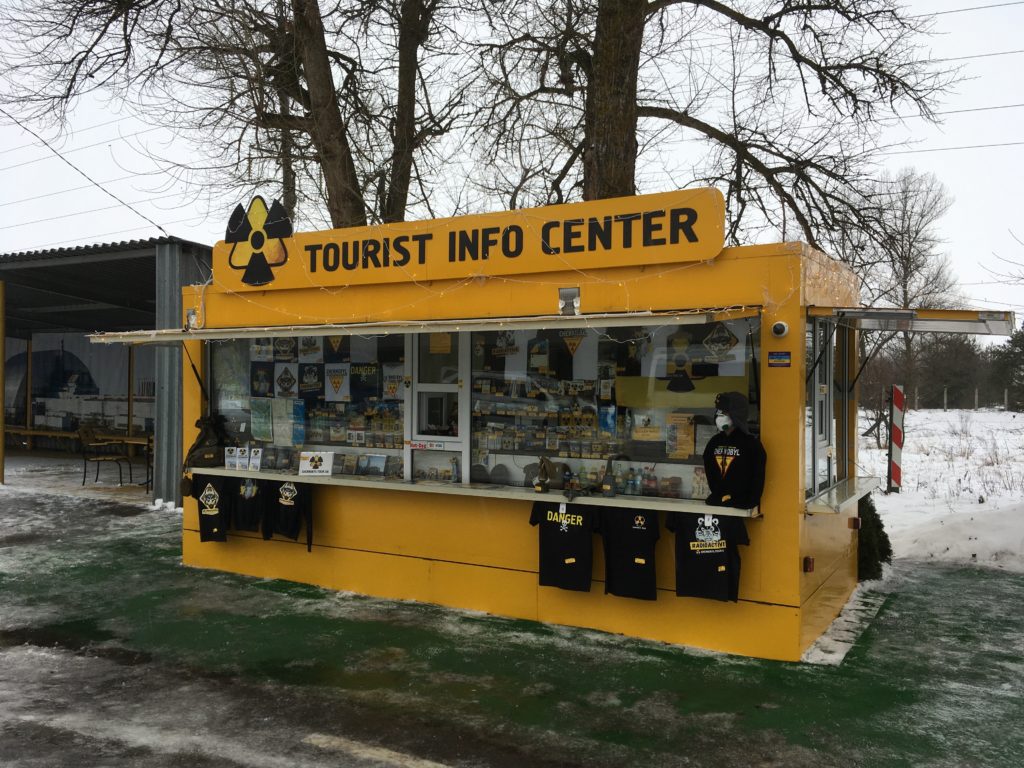
Into the exclusion zone, and a stop at a small abandoned village. The town hall/meeting spot, now overgrown:
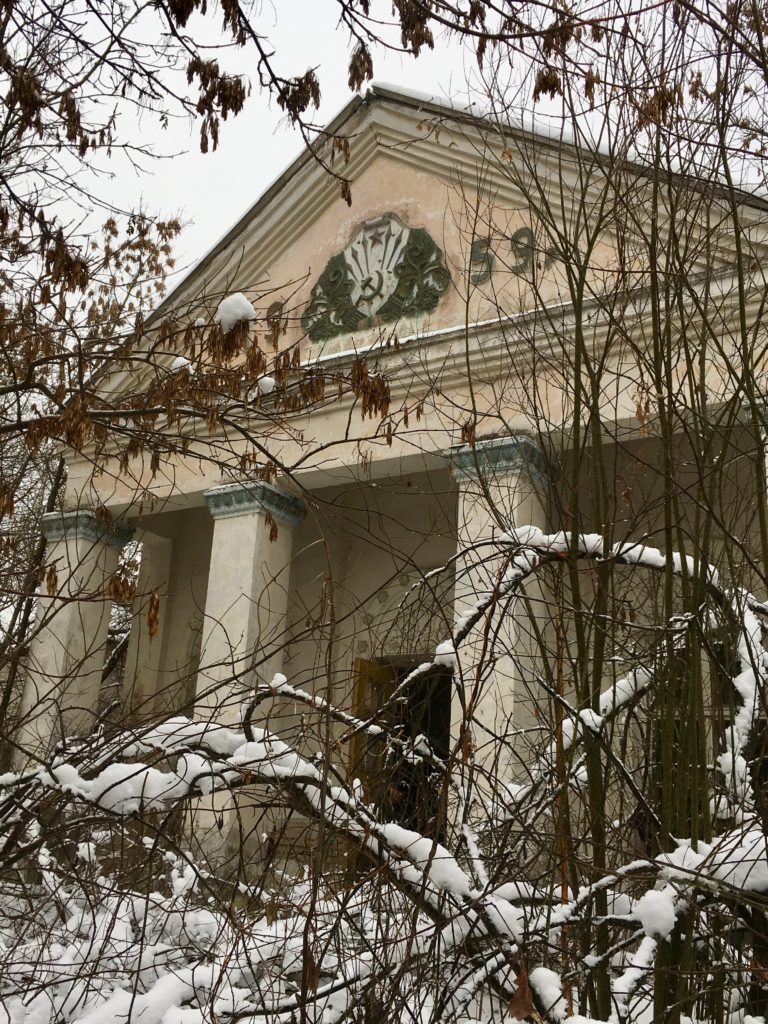
Then onto Chernobyl itself, where posing with the town sign is practically obligatory. Note there was no lack of snow at all to make everything otherworldly:
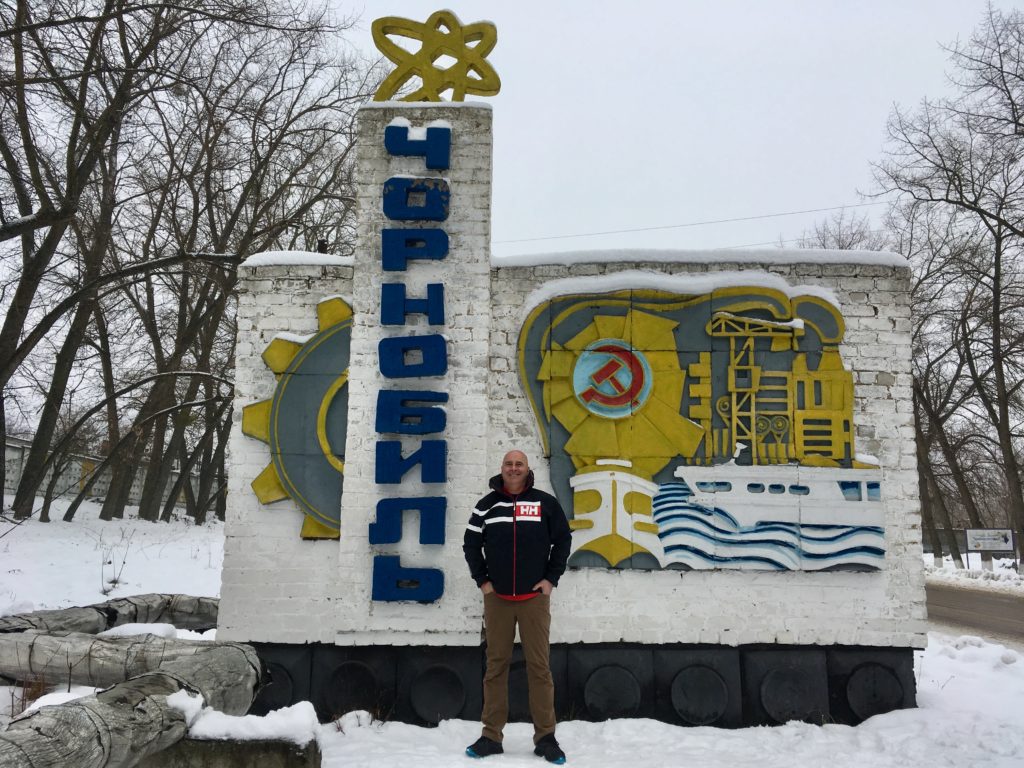
WWII memorial statue outside a Kindergarten in Chernobyl:
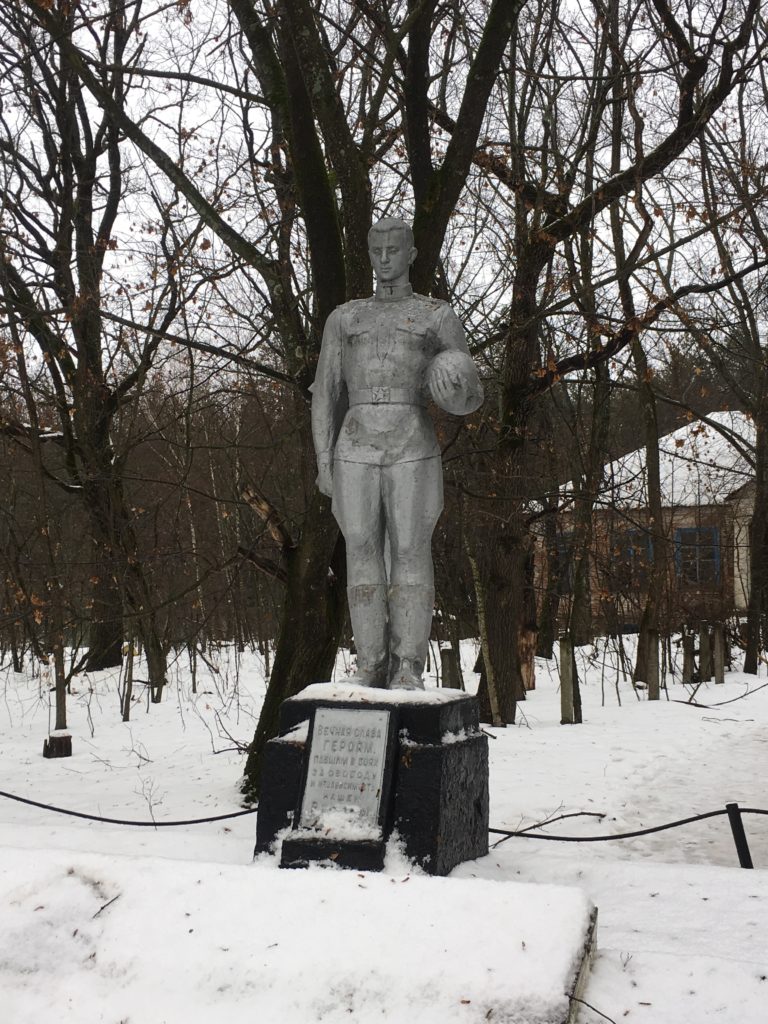
Geiger counter shows a radiation hotspot in the snow outside the kindergarten. 10-15x background radiation, but still only about 3x higher than a transatlantic airline flight.
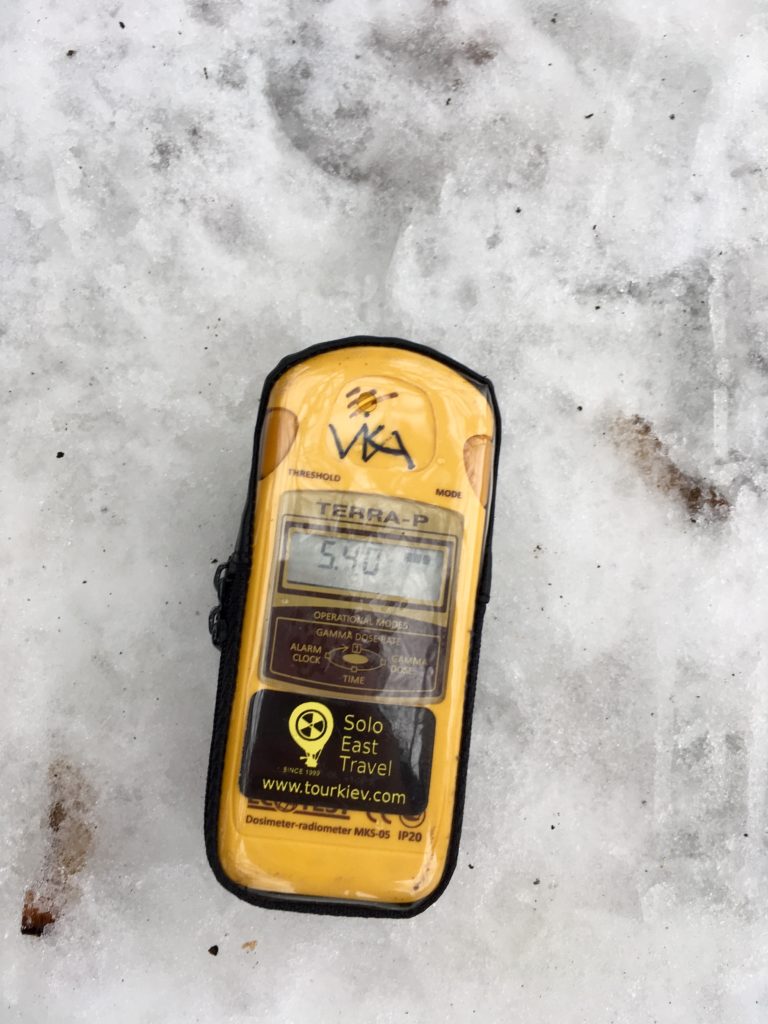
Abandoned kindergarten:
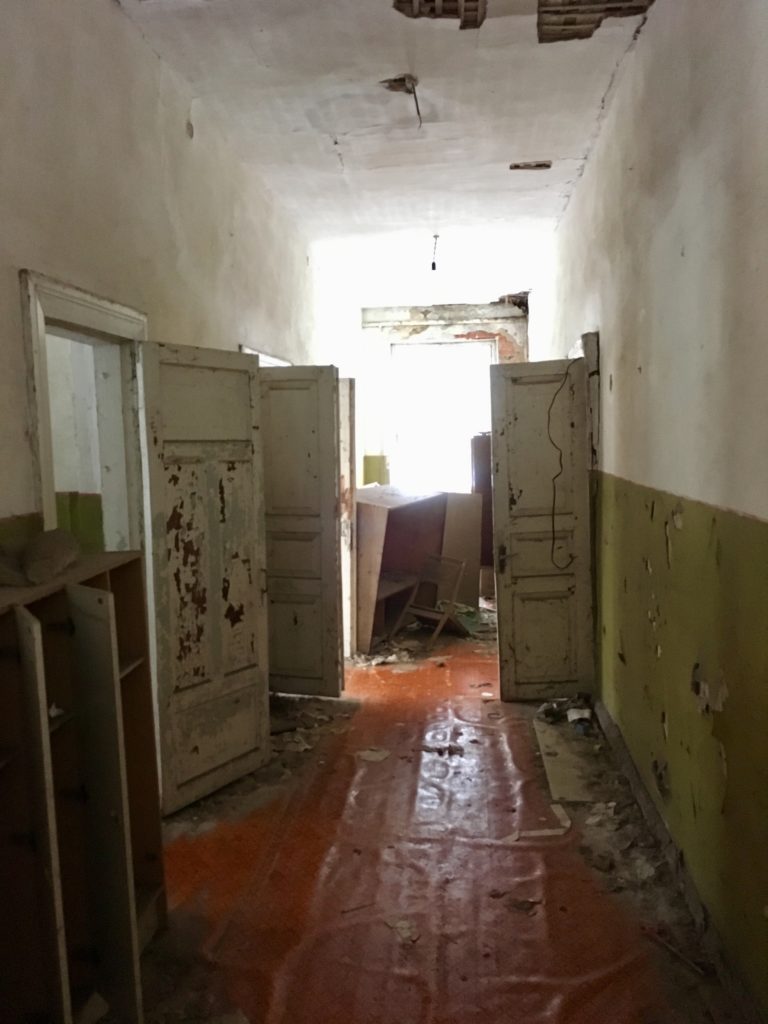
Creepy doll in the kindergarten…according to the geiger counter covered in mostly dirt, but probably a bit of radioactive soot too:
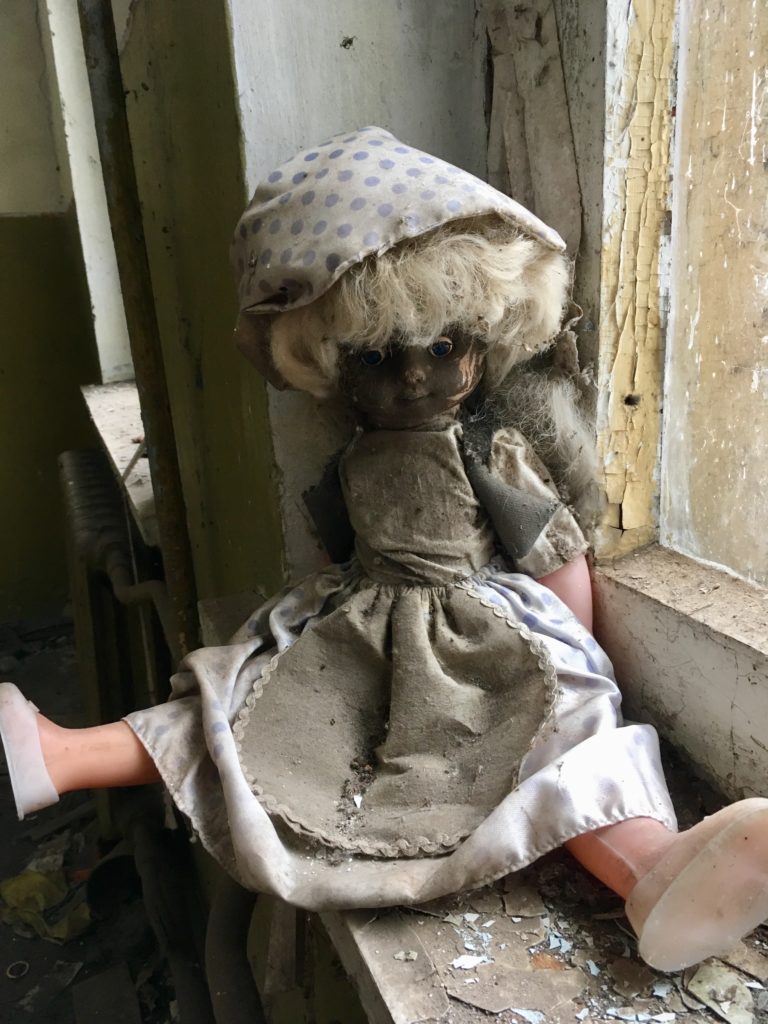
Decapitated doll amongst beds:
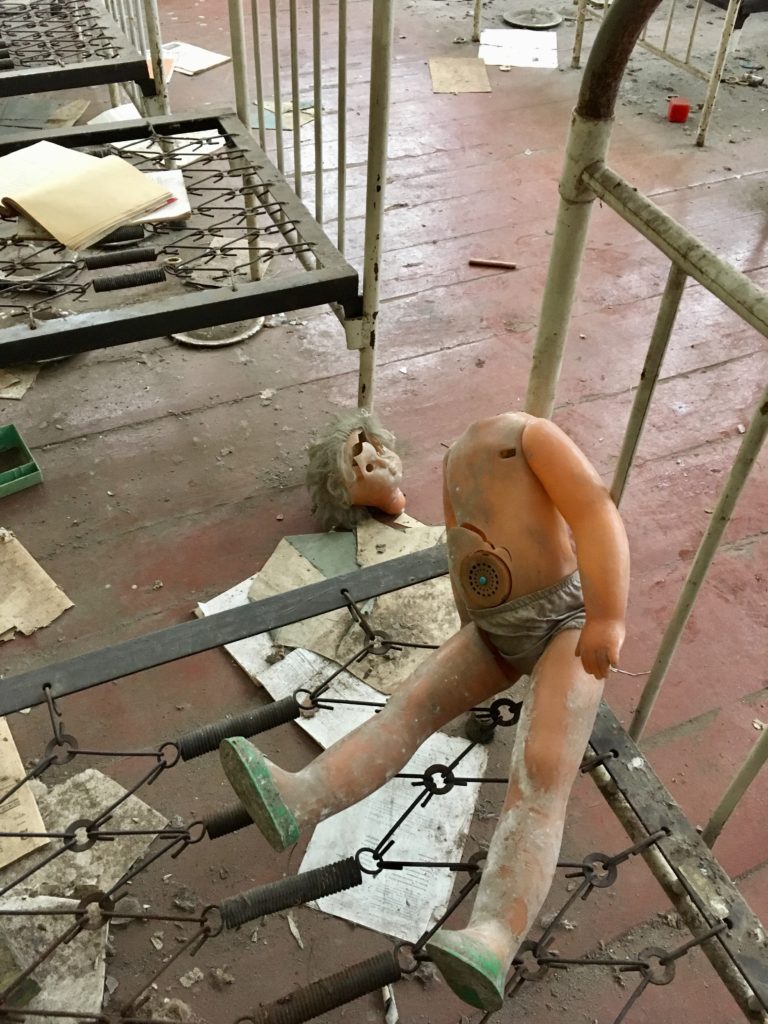
Hey, welcome to Chernobyl!
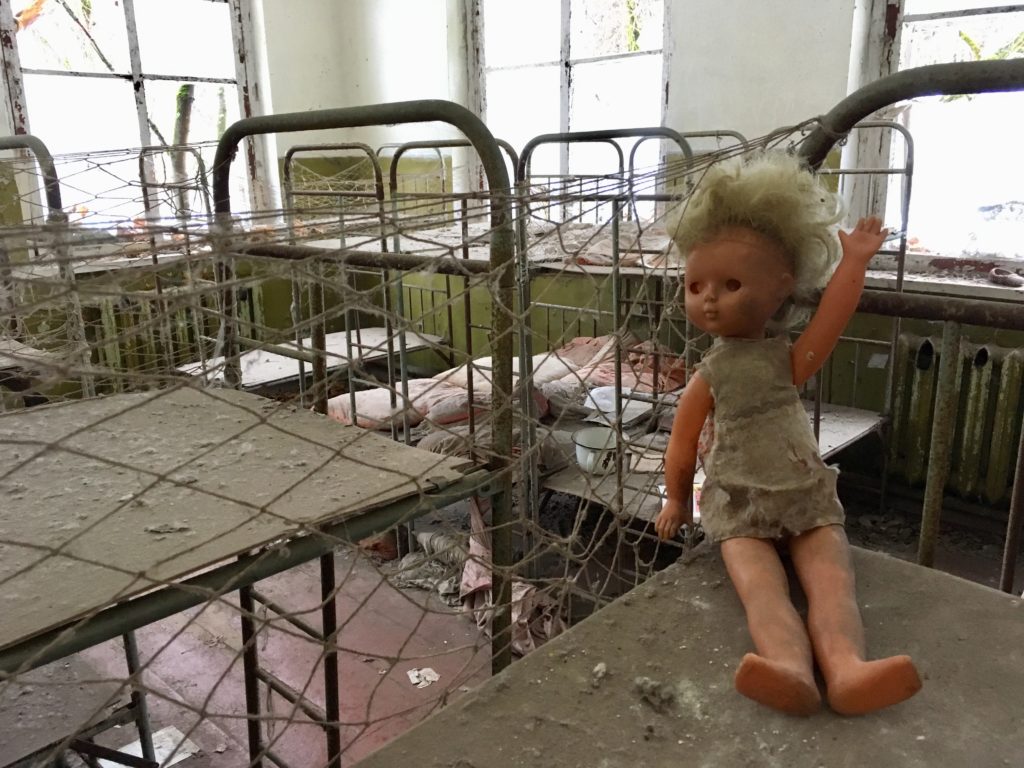
Next stop was for lunch in the exclusion zone, which was at a small motel with a restaurant. Food is brought in daily from outside the zone, so you know it’s relatively radiation free. Nice tasty lunch of soup, meat, and potatoes, and it was off and time for the main event…the reactor itself!
Approaching the nuclear site, with reactors one, two, three, and four. Reactor four was the one that blew and now has the domed sarcophagus over it:
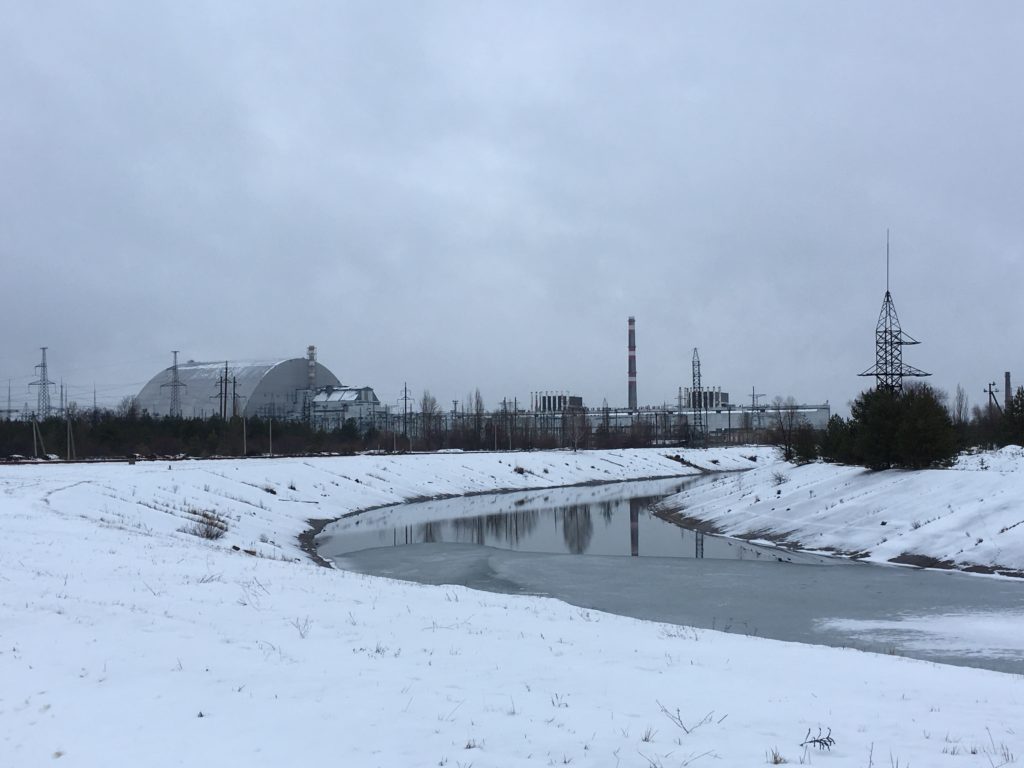
About 80 meters from the sarcophagus of Reactor #4, and the still highly radioactive material inside. Bit of background, in the couple of weeks immediately after the disaster, many firefighters and military conscripts died fighting the highly radioactive fire, some in rather horrific ways due to radiation poisoning and burns. Eventually, a concrete sarcophagus was built over the reactor to stop the wind from carrying more material into the atmosphere, but everyone know this sarcophagus had a very limited life.
A few years ago efforts began to build a more permanent solution, but there was one problem: getting within 100 meters of the reactor was still far too dangerous for more than a minute or so, so how were there going to build such a massive structure? End of the day, it was built about 100-200 meters away, and then slowly inched over the reactor on a massive series of hydraulic jacks. Great details on the “New Safe Confinement” on Wikipedia where you can read about the massive international engineering feat. Right, so here’s the new safe confinement…and also melted down reactor…from just about 80 meters away:
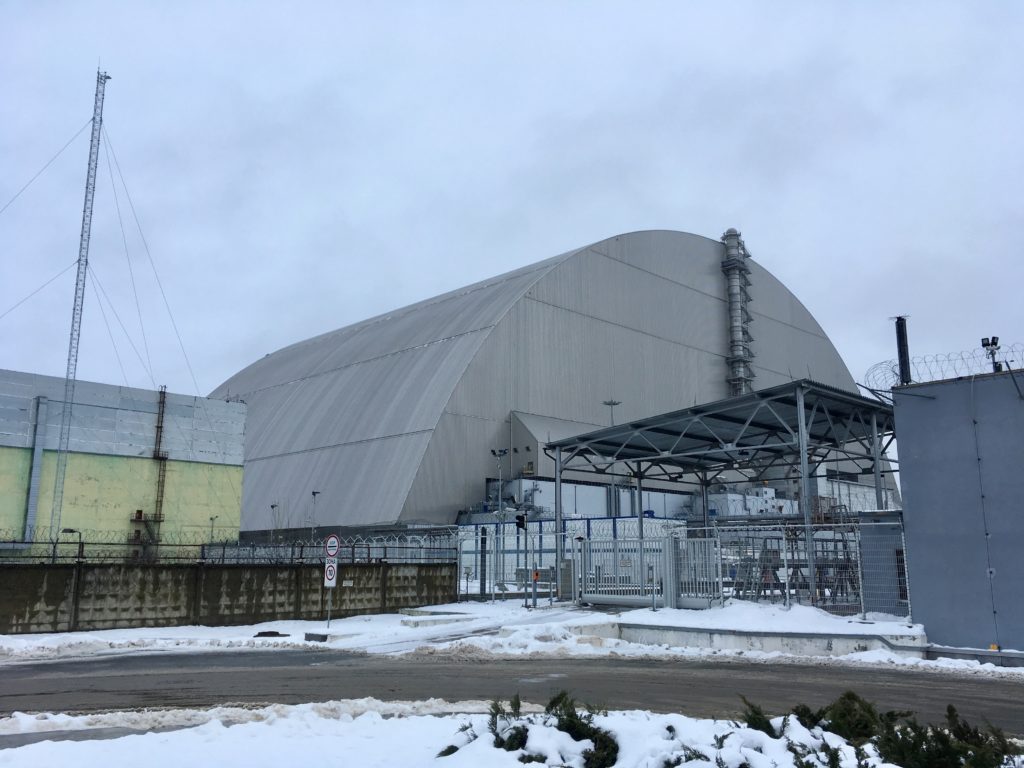
Near the reactor, hotspots are marked by signs. Most of these contain between 10-40x background radiation levels.
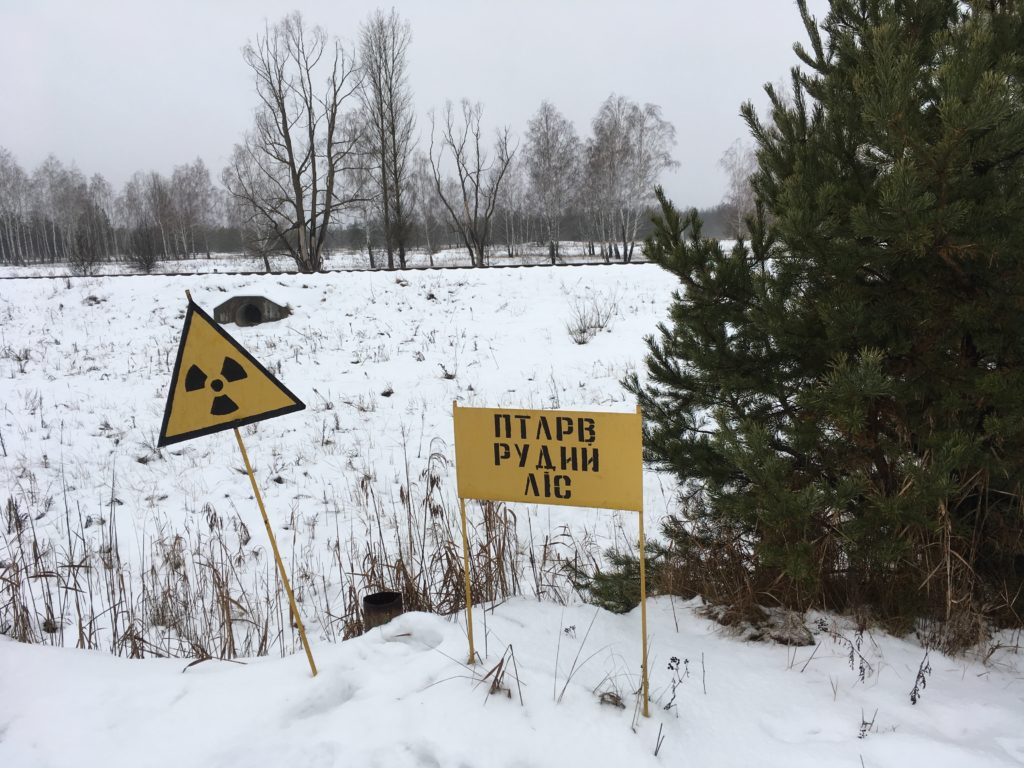
Town sign for the town of Pripyat, near the reactor, where most plant workers lived. Pripyat is actually closer to the reactor than the town of Chernobyl. Not sure why it wasn’t called the Pripyat Nuclear Power Plant…
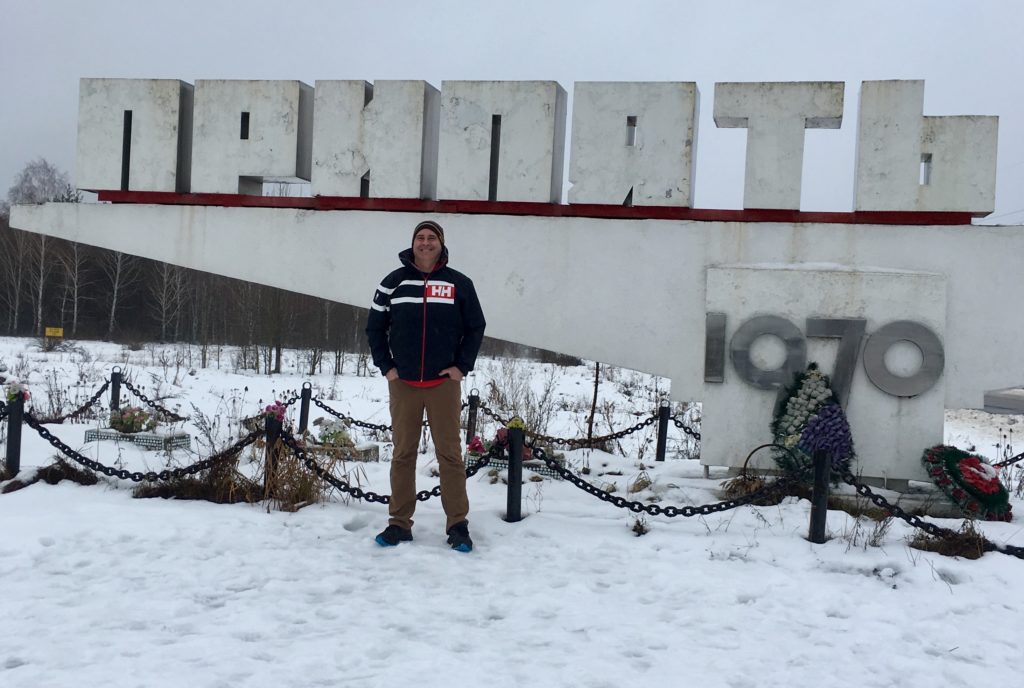
Recreation Center in Pripyat with a destroyed basketball court:
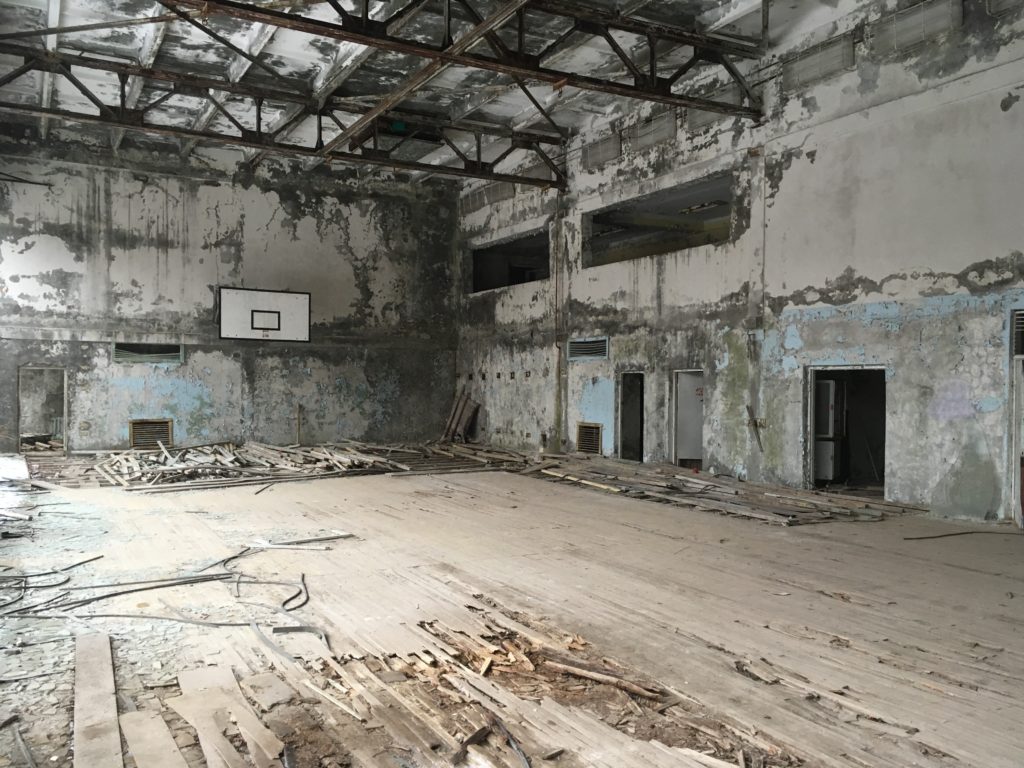
Remains of an Olympic swimming pool:
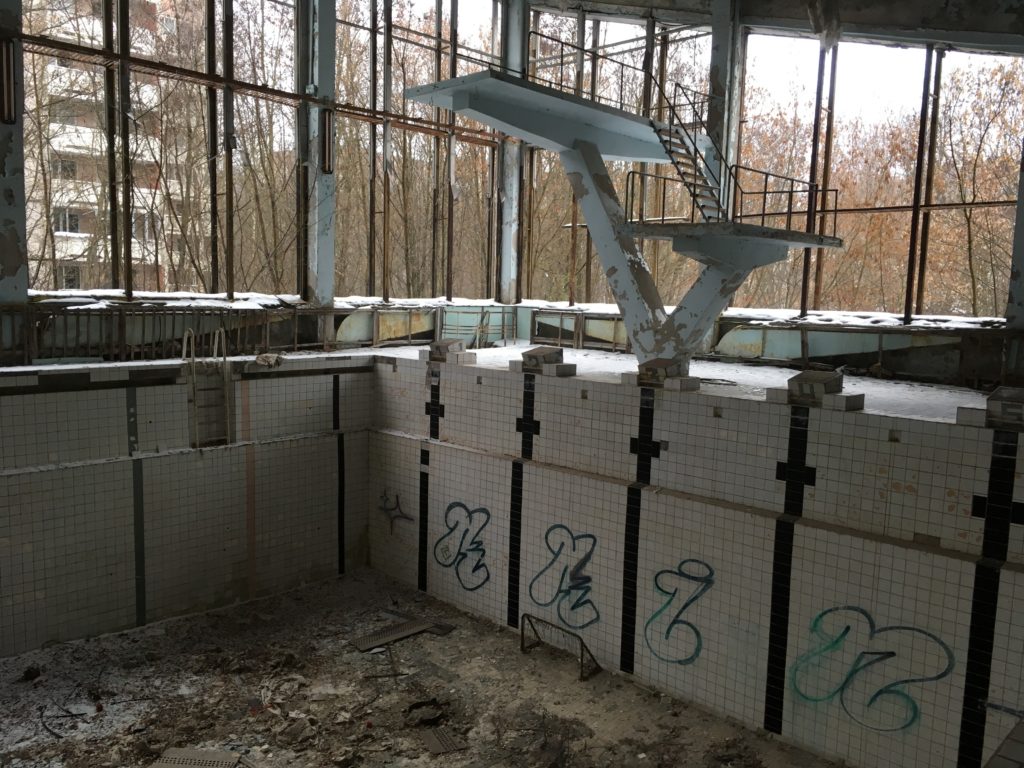
Olympic pool from another angle:
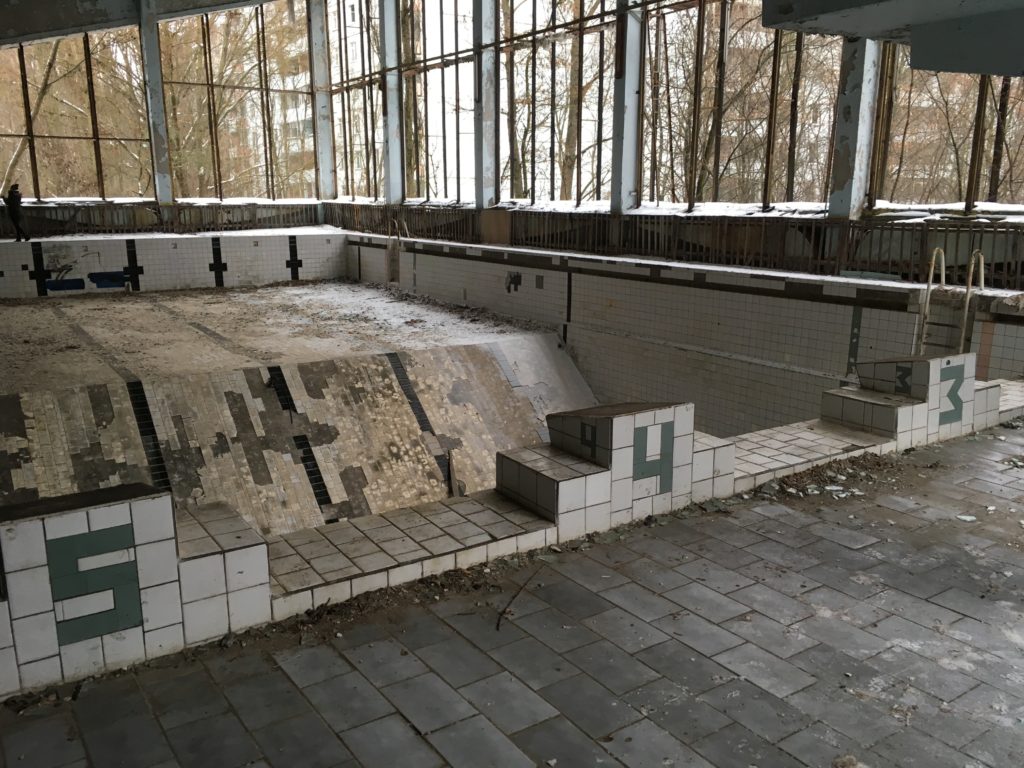
One more shot of the Olympic pool. Was very post-apocalyptic creepy:
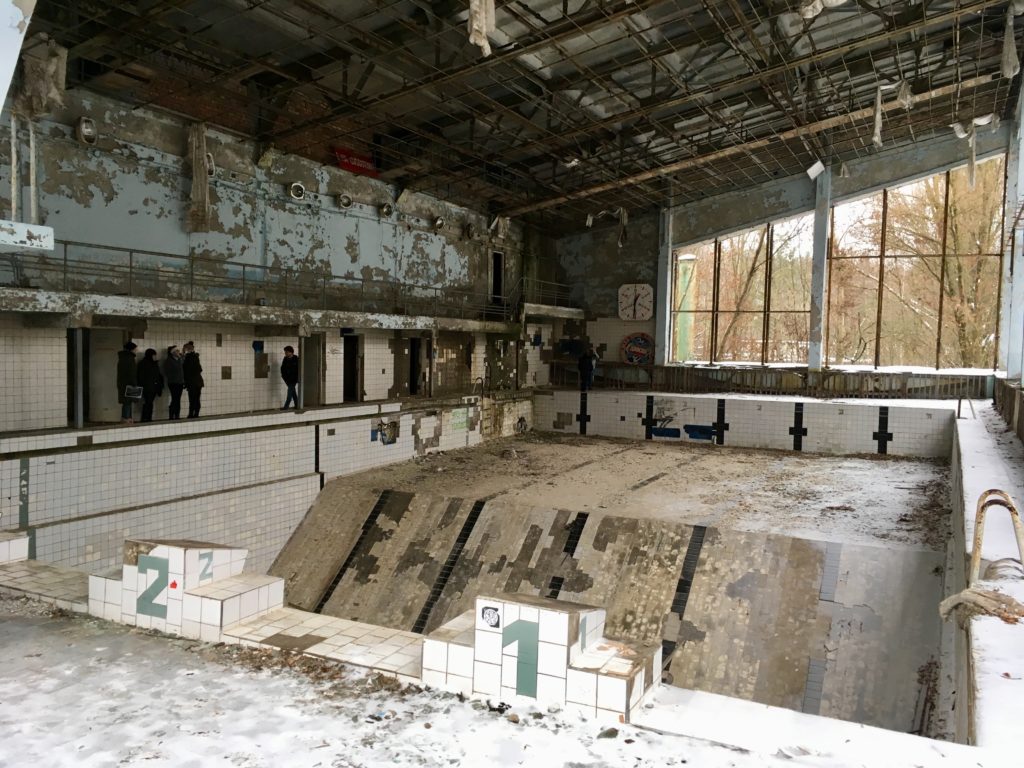
Next up, an abandoned Soviet apartment building in Pripyat. View from the roof: (shhh, don’t tell anyone, we weren’t supposed to go up there)
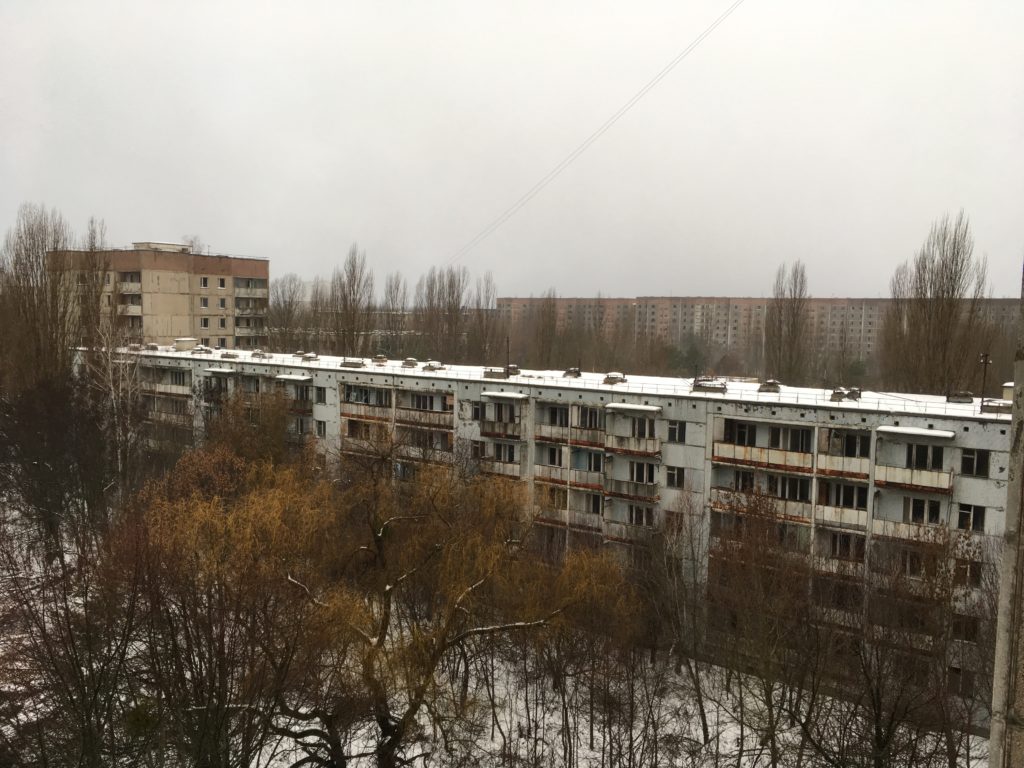
Abandoned apartment:
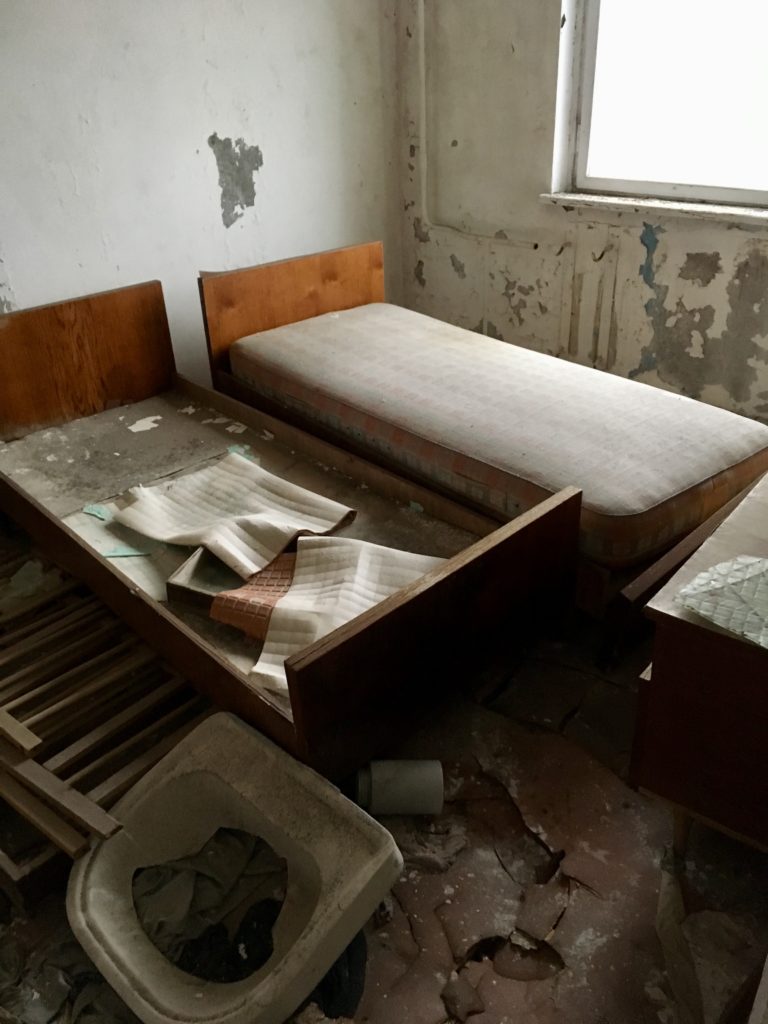
Front of the apartment building 30 years after the disaster:
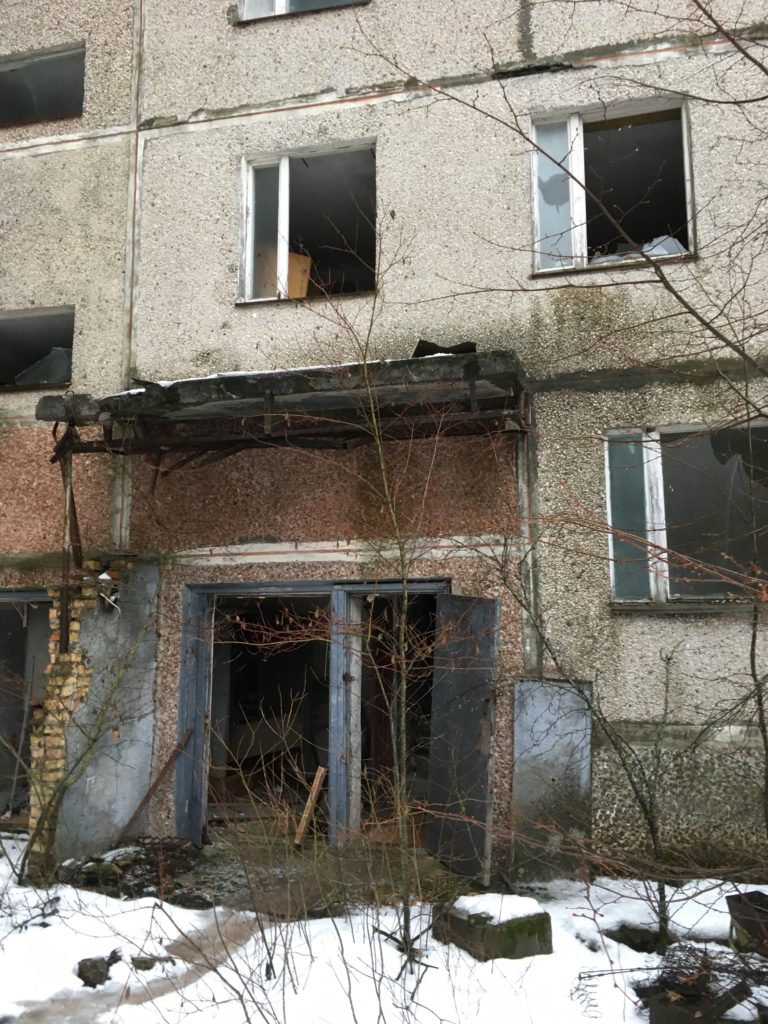
Then on to an amusement park in Pripyat, scheduled to open the week after the disaster. Unfortunately, it never opened. Abandoned ferris wheel:
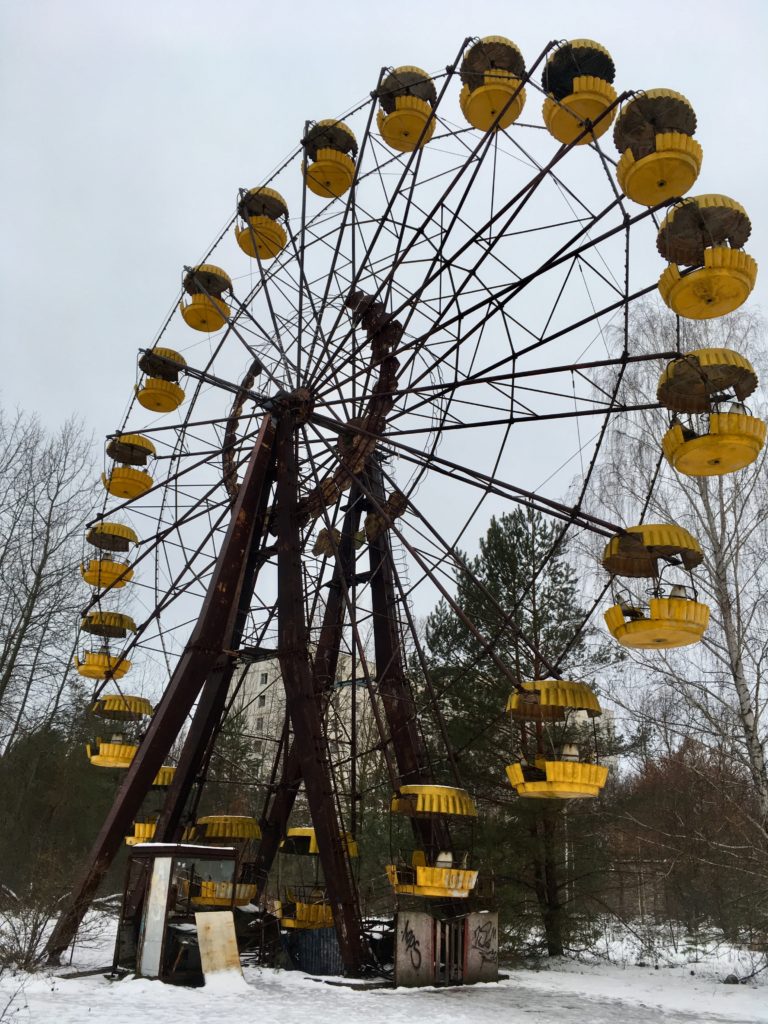
Anyone up for a ride?
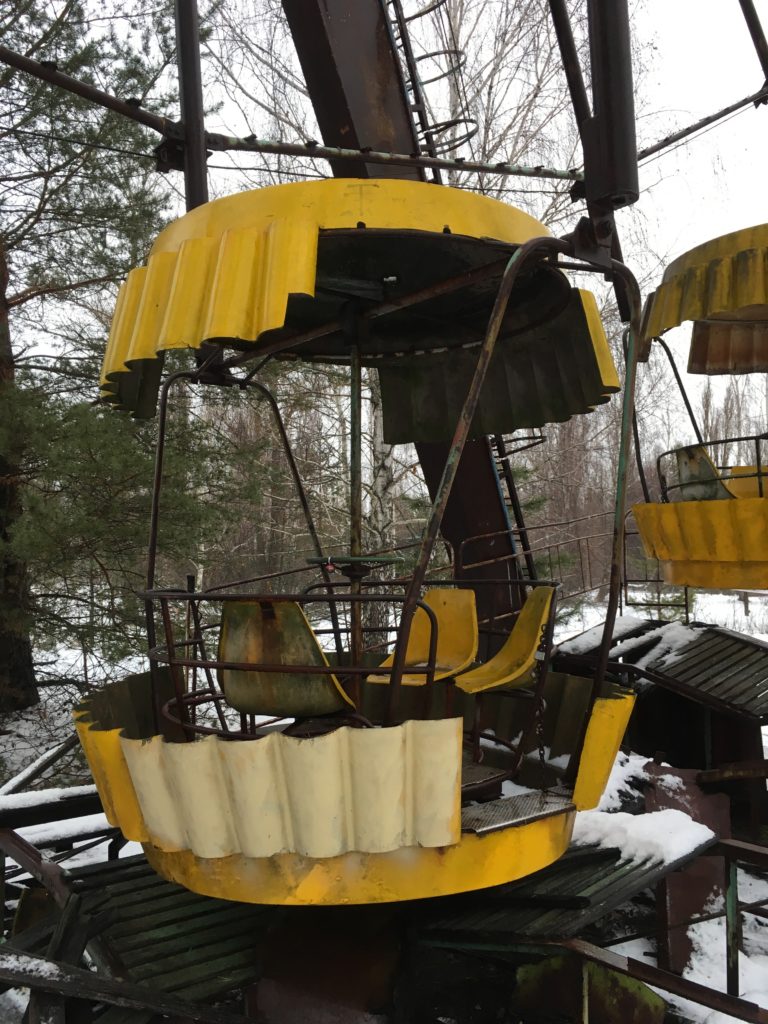
Bumper cars:
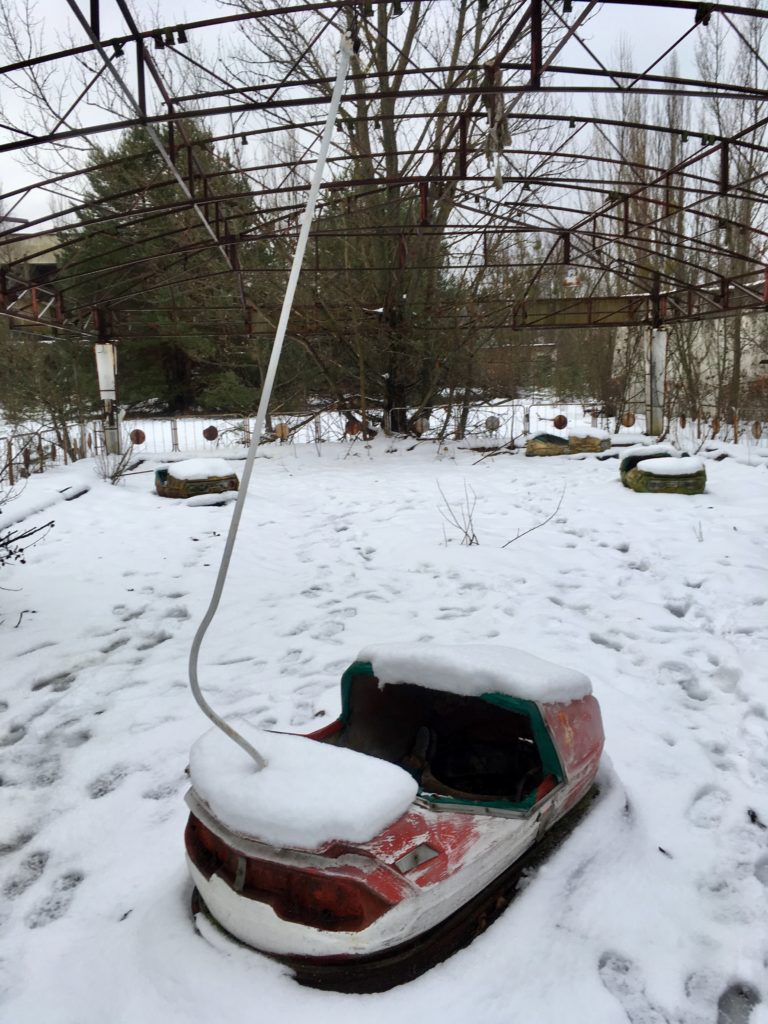
The snow definitely added to the effect:
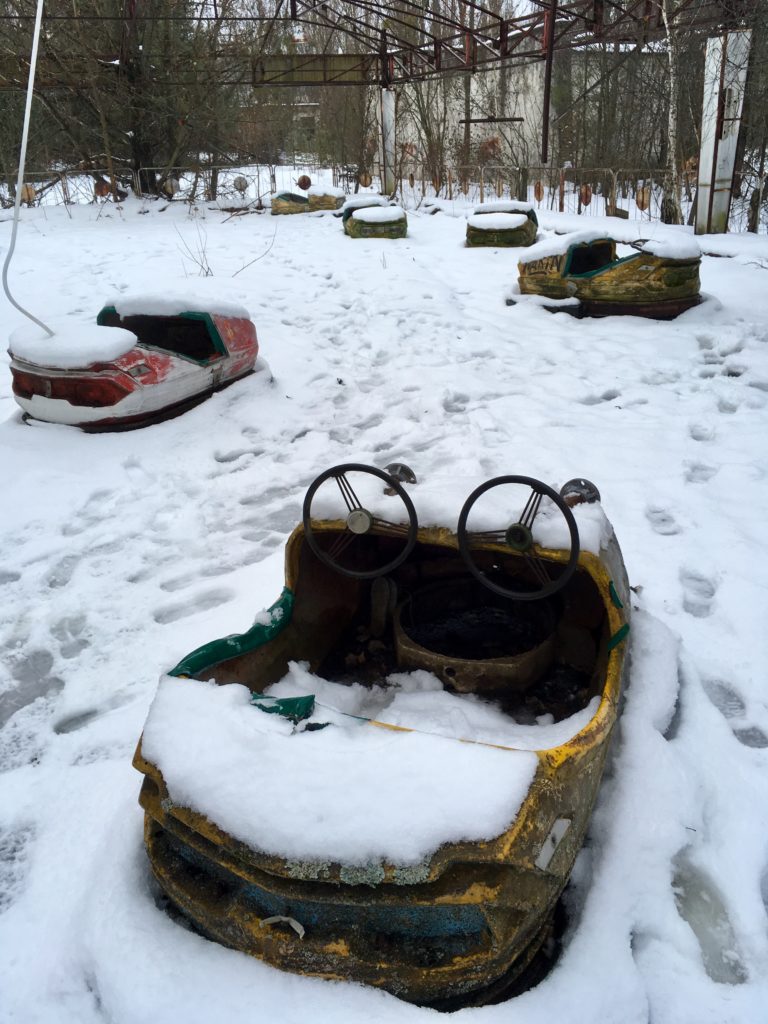
Next up, the town square in Pripyat, complete with abandoned restaurant:
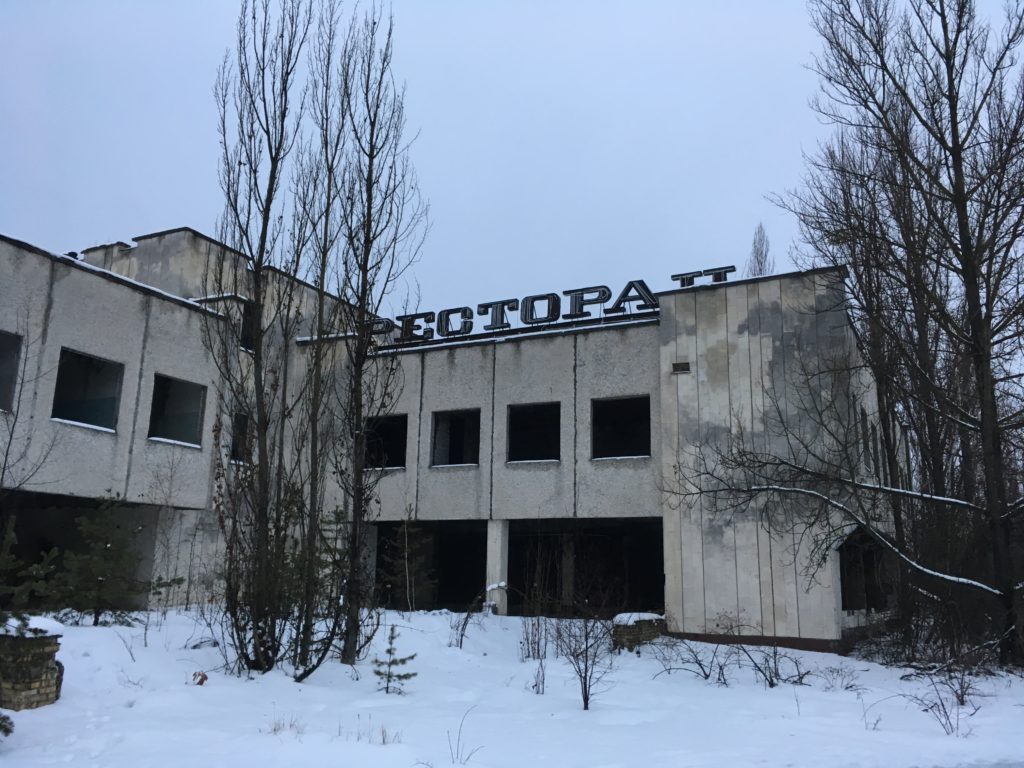
…and grocery store. I found the beer aisle, of course:
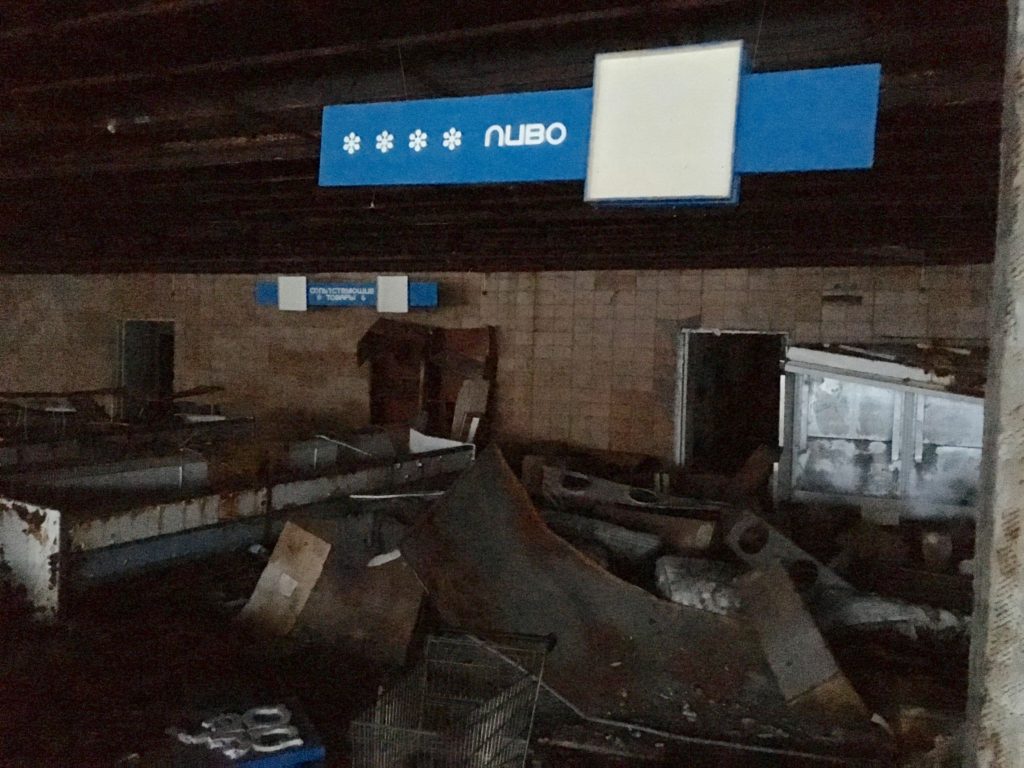
Sadly, the candy and cookies aisles were bare:
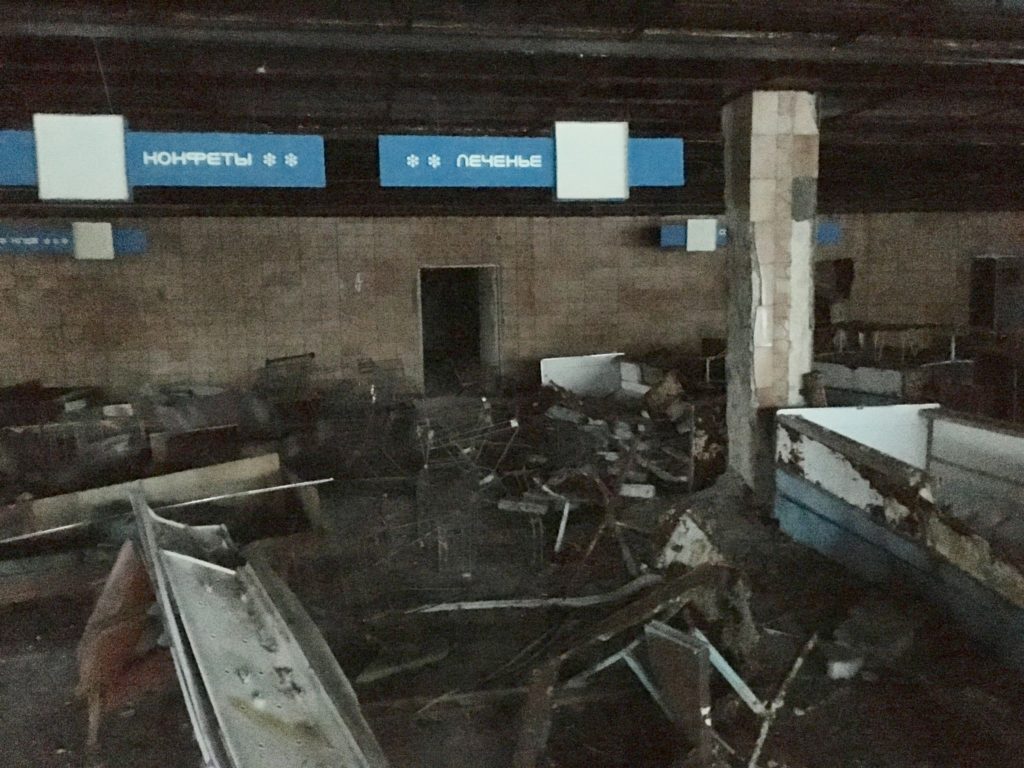
Random gasmask on the ground outside the grocery store:
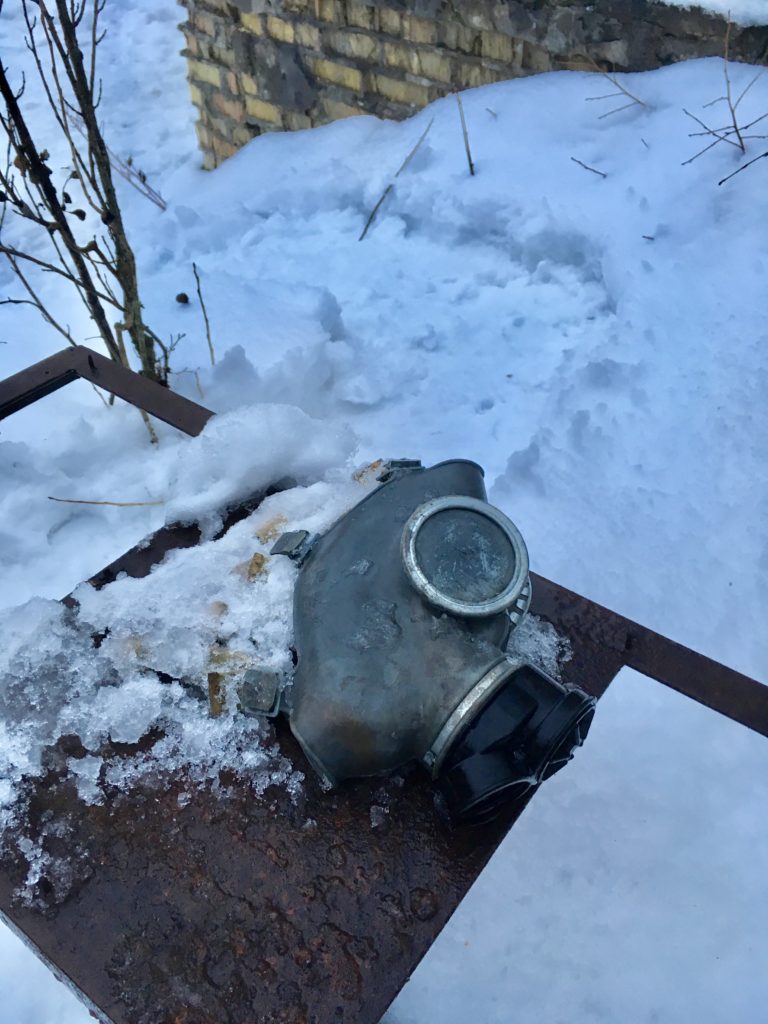
One final stop as the sun was setting was the DUGA radar station, also known as the “Russian Woodpecker” for the pecking noise it made over shortwave radio bands. I can’t describe the technology well, but Wikipedia has a great explanation of what the DUGA was. One thing it certainly was was massive:
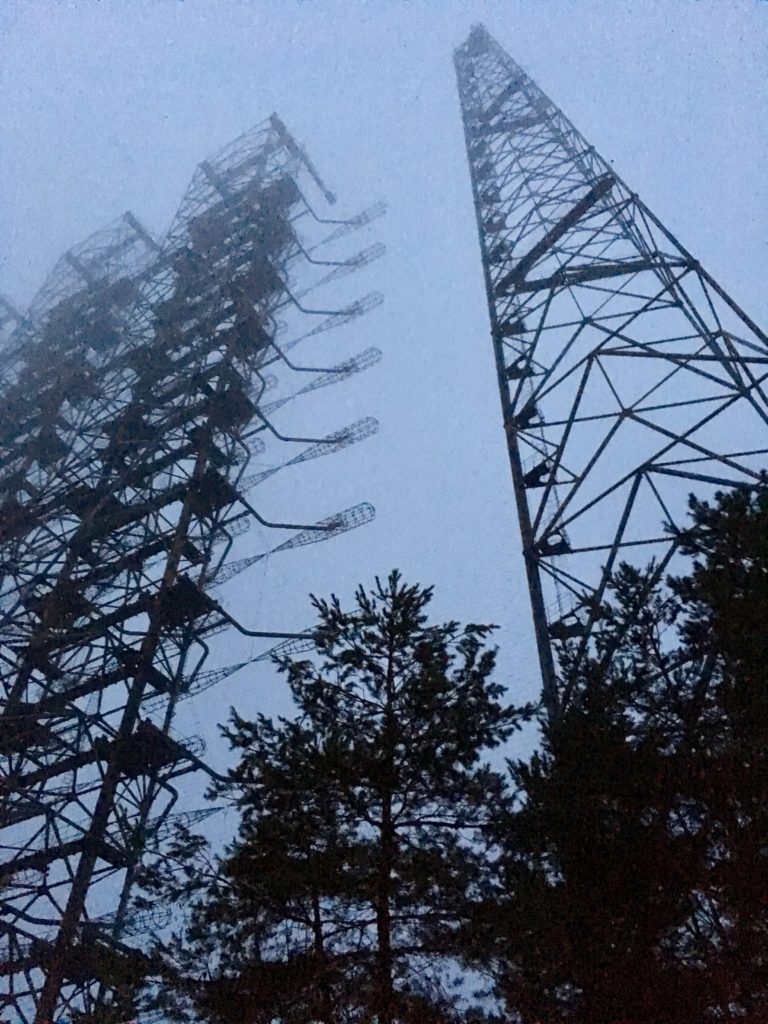
View of a small part of the abandoned radar from below:
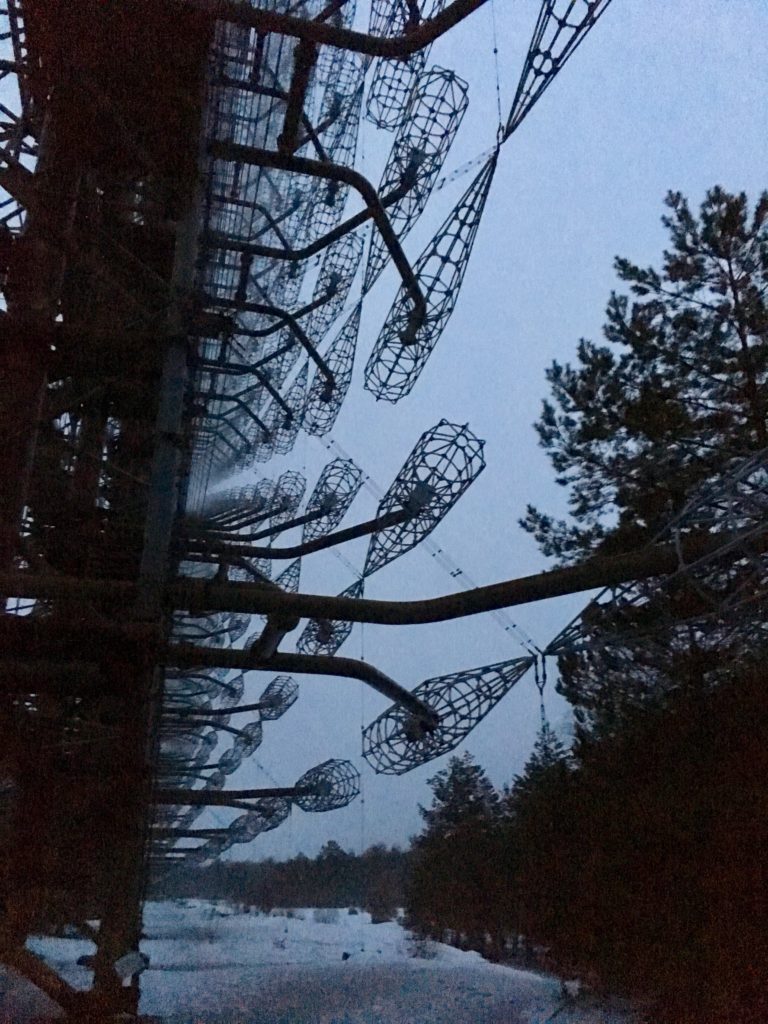
After that, it was completely dark, and time to head out of the exclusion zone. To get out, we had to pass through two separate radiation detectors, one at the 10km marker and another at the 30km edge of the exclusion zone. Here I am being scanned. If you pass, the gate would automatically open for you. Supposedly the detector at the 10km marker isn’t very sensitive, but the 30km one is since that is where you’re “free” from the zone:
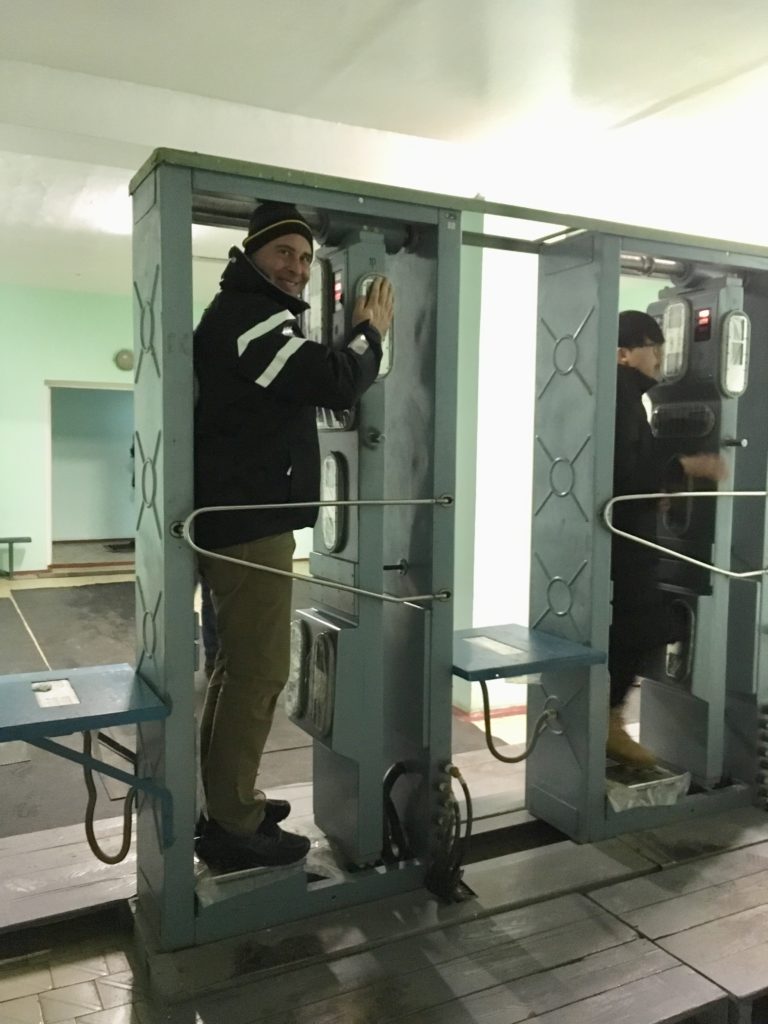
With that, it was about a 90 minute drive back to Kiev, which we reached just before 8pm. It had been a very long day, but super fascinating and well worth it. Highly recommended for anyone going to Kiev! SoloEast was also absolutely amazing – especially our guide Vika – and would highly, highly recommend them to anyone wanting to visit Chernobyl!
